Naval aviation emerged during WW1 already with all belligerents. The post-war years however saw either attempts of a dissolution or fusion of these service with regular air forces. The interwar years were crucial to the development and demonstrating the capabilities of this service, and to be independent. The later 1930s saw it generally accepted as an autonomous service but the belligerents were not all equal in that guise: On the axis side in 1939-41, only the Japanese Imperial Navy benefited from an interference-free, well trained and well-supplied naval air service, with some iconic models such as the A6M zero, and a complete panel from seaplanes/floatplanes, carrier-borne aviation to land-based bombers.
Naval Aviation did not developed in a vacuum. Belligerents in WW1 already developed a naval aviation, often independent, before 1914 already for some; such as the French Aéronavale, British RNAS, German Marineflieger, or the Austro-Hungarian K.u.K. Seefliegerkorps, or dependent services such as the Russian Emperor’s Military Air Fleet and the Italian Regia Aeronautica or the USAAC.
In WW2, the axis’s Luftwaffe and Regia Aeronautica on their side were to provide for the needs of the navy, which they did with limited enthusiasm. On the allied side, the former RNAS became the Fleet Air Arm in 1924, independent again from 1937 and assumed a considerable panel of missions throughout the Empire which only grew exponentially in WW2, as did the Canadian and Australian naval air services. Outside UK, France and the Netherlands had both developed naval air service as well. In the US, the independence of a USN air service was a long fight, even within the USN itself, still attached to the Mahanian view (“battleships first”), but shaken by Mitchell and William A. Moffett. Again, this service was developed to a dramatic way during WW2. Also the Soviet Union possessed a Navy and a naval air component, albeit reduced and provided with regular air force models.

Stunning photo showing the extent of the USN air power in WW2: In addition to the numerous interwar models, Vought Vindicator, Curtiss Helldiver (i), Douglas Devastator & Dauntless, Gumman F3F, Brewster Buffalo and many seaplanes, floatplanes and observation models, the “trinity” of carrier operation rested on the SBD Dauntless, F4F Wildcat and TBD Avenger and later the F5F Hellcat, SB2C Helldiver and Avenger again, plus a wide variety of ground-based USN planes, included the Vought F4U Corsair.
For all nations concerned: Belligerents of WW2, both the axis and allies, used seaplanes, floatplanes, and for the only three naval powers with aircraft carriers, a plethora of dedicated models over the years.
In this portal page, we will see the creation (WWI), interwar development, controversy, and spectacular expansion in WW2: All models from all nations, their organization and tactics. The fleet air arm was called as such by the British, was known under many local variants. It had a hard time to be accepted, but in WW2, naval aviation revealed itself playing a vital part of all naval operations.
A Definition: Seaplane, Floatplane or Flying Boat ?
Naval planes came in two flavours already in WW1: Those that can land at sea, and the others. The first obviously are given this capability and are unique to this branch of aviation, wether it is independent or not. But this goes with a peculiar arrangement, ot two variants:
-Either floats (“floatplane”) which can be two under the wings or three, one main under the fuselage and two smaller under the wings.
-Or a boat hull. The fuselage underbelly is designed as a boat hull and is directly in contact with the sea. They are called “seplanes sometimes” but more precisely flying boats whatever their size.
The generic terms for both is assumed to be “seaplane”.
Both designs have their pros and cons.
The floatplanes could be already existing land-based models, proven, just “converted” by adding floats.
Pros: They sat tall over the sea and are less susceptible to sea spray, are quickly designed and converted from existing models, so a quick development loop.
Cons: The drag caused by the floats degrades their original performances considerably.
The flying boats are tailored models which fuselage will be in direct contact with the sea.
Pros: Causing less stress than with floats, they can be immense, and are generally more sturdy. They also have less drag compared to floatplanes as the float is integrated into the fuselage.
Cons: They are longer to design and develop, obliges to rething the engine location (ie. for the small ones, the pusher, top wing mounted configuration is a must to avoid sea spray), and needed more power to take off and generally needs a sturdier frame, thus heavier.
They are mostly shore based models, being heavier than catapulted models. Large flying boats were a must for long range patrols in WW2.
In Europe, British naval aviation opened the ball back in 1914, pioneering naval aviation and expanding it dramatically all the way through the interwar, influencing other nations. In WW2, its naval aviation grew a very important part, in Europe, from the attack on Taranto in November 1940 to the torpedo attack that jammed the Bismarck’s rudder in May 1941, securing its doom for the allies or Patrolling the Atlantic, spotting and attacking U-Boats. While in the Pacific, its became instrumental. After the loss of its capital ships, the USN maintained its presence for two gruelling years with an arguably inferior naval force, surviving to Coral Sea, Midway, Guadalcanal and taking the offensive, until the final march of the Philippines sea. These were all naval air battles, with a few naval battles in between, in the context of an amphibious campaign.
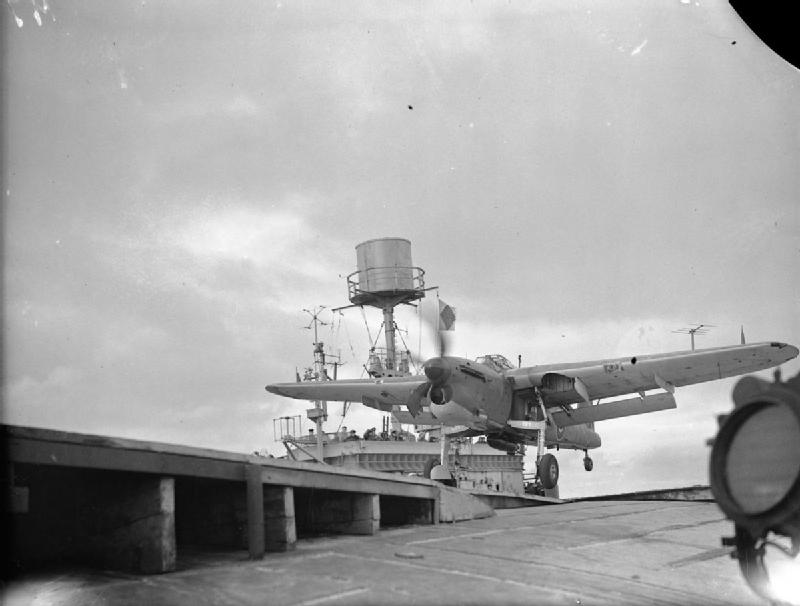
British Barracuda, Operation Mascot, July 1944. One of the numerous air raids against the Tirpitz.
All these famous battles, for the first time in history, were played “over the horizon”: Ships never saw each others. It was a fight by procuration, like an introduction to the missile age of the 1950s. A crucial fact in 1939, was that nearly all belligerents never measured the full scope of the revolution naval aviation would bring to the table. Mahanian doctrine was still prevalent in admiralties. Nevertheless, another crucial fact for the allied victory was that only one of the three axis powers had aircraft carriers.
IJN aviation was probably among the world’s best in 1941, certainly in Asia, contributing to the early campaign’s quick successes. But over time, Japan paid the price of the assumption of the supposed lack of will of the US people, and of the submarine threat. Both would cost its Empire the war. By 1944, after two years of wartime industrial production, USA was ready to steamroll its way back to Japan. The lack of experienced pilots and aviation gasoline played against the IJN and as a symbol, both the mighty and so Mahanian Yamato her sister ship, Musashi, were destroyed entirely by air power. And among the most significant losses by the USN in the late period of the war (like USS Franklin), Kamikaze were responsible.
Main Naval Types
Catapulted Observation/Recce models
(To come)
The seaplane fighter, a rare category in WW2
After the disastrous Norway campaign the Royal Navy tested a Blackburn Roc on floats, which performed even worse, not even reaching 270 km/h and half the altitude of the original. Its Bristol Perseus XII engine just could not cope with the added drag. It was more than difficult to pilot and the sole prototype crashed. It seems the case of the naval fighter was definitely buried for the Royal Navy. Though, was published on May 29, 1941 in the British journal Flight after the fall of Crete, following Operation Merkur: On the Air Strategy section, Captain Norman Macmillan lamented the neglect of naval aviation, saying: “It does appear that the possession of a number of high-performance floatplanes just now might have been extremely useful. There must be a number of sheltered bays in that part of the Mediterranean where floatplanes could be refueled from ships, and although the floats would detract from performance, the seaplanes would probably have been fast enough to have a good chance of causing severe havoc among troop-carrying planes and gliders.”
It appears again to RN planners that having capable fighter seaplanes could be extremely useful. There were still many sheltered bays in the eastern Mediterranean where seaplanes could be refueled from ships. The Aegean islands notably were festered with such locations. Even if floats hindered their performance, fighter seaplanes were still plenty enough to shot down older bombers, Ju-52 transport planes, and even more those towing gliders, transformed into defenceless lumbering beasts.
Based on this, tests were made on a Spitfire Mk V with float, three of which were built at the end of 1942 and sent to Egypt in 1943, but never used operationally. Overall, Britain, up to the end of the war lacked fighter seaplanes. But with enough aicraft carriers past 1942, and most of all, the sea hurricane and later sea spitfire, there was no longer need for these. And so did the USA, which could have though of deploying some fighter seaplanes of their own in he Pacific, offering plenty of opportunity for their use. Tests were made with Hellcats with floats, but it never went beyond. The only real seaplane fighters in service with the USN started to appear by late 1944, as the Curtiss SC Seahawk… too late to make any impression by then. When retired, the very idea of catapulted seaplanes died with it.
This was not the case for Italy or Japan. Both axis members thought out the concept early on, and came with very sensible designs. The palm should go to Italy, that despite lacking a proper naval aviation (after the all the name said it all, “Aviazione Ausilaria per la Regia Marina”), the Italian Navy still had plenty of naval fighters in its inventory. This had historical roots, in WWI to be more precise, when Austria-Hungary’s Lohner seplanes found no issue downing any Italian model. The Macchi M.3 evolved into the Macchi M.5 which even gave the USN its first aces, and soon Savoia-Marchetti joined the fray. During the whole interwar, the development of fighter seaplanes went on with many iterations, but when Italy entered war in June 1940, there was no modern seaplane fighter of offer for the Regia Marina. Apart some Fiat Ca.32 Hydro and antiquated Piaggio P.6 in small numbers, the Ro.44 “Octopus”, a derivative of the standard issue IMAM Ro.43 biplane, was the only thing on offer, and a prototype.
In the end, only Japan was really serious in 1941 and consistent with naval floatplanes:
That year, from 1937, the Nakajima E8N “Dave” made wonders in China, and from 1939, the Mitsubishi F1M2 “Pete” passed already for the world’s best naval fighter, although a scout by trade. The A6M-2 “rufe”, derivative of the superlative “zeke”, one of Japan’s “secret weapons” in December 1941 took back the crown. And by 1943 Japan stayed at the head of the race -by a fair margin- with the Kawanishi N1K Kyōfū “Rex”. Probably the best naval fighter of WW2 hands down. It was even put on undercarriage and went on fighting from land until the end of the war, cementing its place also as the best land fighter of the Navy.
Large Seaplanes
(To come)
Land-based naval patrol bombers
(To come)
✙ German naval aviation
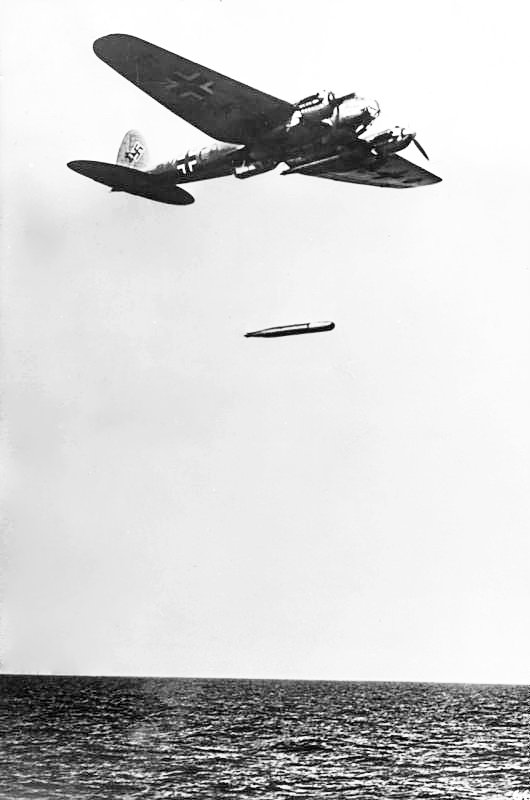
The Luftwaffe used the He 111H for anti-ship warfare, armed with two torpedoes.
Issues and coordination
The Luftwaffe was created as a natural inheritance of the Luftreistkrafte of 1914 and ists naval branch, the Marineflieger. Hermann Göring while developing the organization and procurement of his “private army branch”, given his past of ace and early follower of Hitler, was never keen on creating links with the Kriegsmarine. Prior to 1939 no serious attempt was made to create an independent naval force, notably because “blitzkrieg” operations limited use of the navy, the absence of colonies, limited access to the sea between the Baltic and north sea coast.
Nevertheless, the Kriegsmarine still needed marine models, seaplanes and floatplanes, and thus the Luftwaffe was to provide these models, at least to care for patrol, reconnaissance, search and rescue roles. The weak Kriegsmarine was geared as raiding force, and it Plan Z included aircraft carriers, this was a vain attempt shattered by the entry into the war in September. Later as the war developed, some air support for submarines and commerce raiders, urged the creation of dedicated units. Use of aviation for various antiship tasks later varied from theater to theater. But apart the creation of the Fliegerführer Atlantik, not even independent nor attached to the Kriegsmarine, there was an attempt to combine avoation with submarine warfare, with some success in 1941-42, but declining in 1943 until the corps was disbanded in early 1944. Now that the allied air superiority over the Atlantic was total.
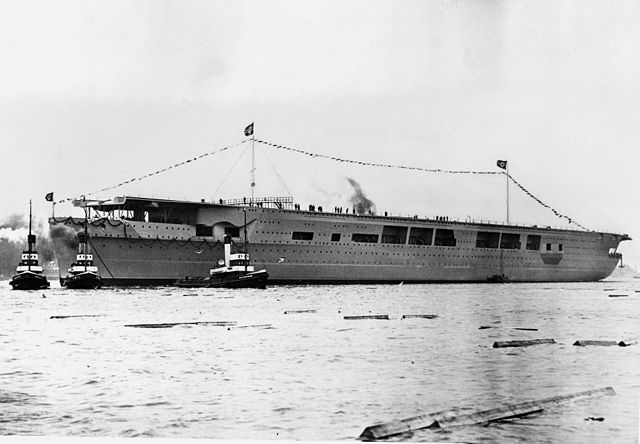
The question of carrier-borne aviation was evoked by Admiral Raeder as part of plan Z, before being stopped in September 1939, leaving the Navy with an unfinished program and a single, non operational carrier, the Graf Zeppelin. For it, three dedicated types were created, the Messerschmitt 109T, Junkers 87G and Fieseler Fi 167. During WW2, Graf Zeppelin’s sister, Flugzeugträger B laid down in 1938 wa salso cancelled. Other attempts to convert various vessels into carriers led to nowhere, like for the Scharnhorst, Gneisneau or the Admiral Scheer and Lützow. Instead, focus turned to captured vessels, civilian and warhips, such as the Kleiner Flugzeugträger, Hilfsflugzeugträger II (based on the unfinished cruiser De Grasse), SS Europa, liner SS Gneisenau, SS Postdam or the Hilfsflugzeugträger Seydlitz based on the Hipper class, based on the conversion project “Weser 1 “.
Organization in September 1939 comprised the Luftkreis VI, German naval air command, based in kiel with two air districts, Luftgau I in Königsberg and Luftgau X in Hamburg covering the north sea. The OKL directorate for naval aviation, Luftwaffen Inspektion 8, was disbanded in 1942. Luftkreis VI was created for sea operations from Norway. III. Gruppe/Kampfgeschwader 100 and 1., 3./Kampfgeschwader 200 operated with Stukas and Ju-88 in antiship missions and gained quite a reputation and skills in that matter.
Specific units having exclusive naval role were the Bordfliegergruppe 196 operating from coastal bases, the Küstenfliegergruppen or Coastal Combat units (bulk of these units) and the Seeaufklärungsgruppen for naval reconnaissance.
WW2 “marine” Luftwaffe models
The Bordfliegergruppe 196, Küstenfliegergruppen and Seeaufklärungsgruppen operated mainly seaplanes, floatplanes and flying boats.
- Arado Ar 95 – two-seat coastal patrol and light attack floatplane (1937)
- Arado Ar 196 – two-seat shipboard and coastal patrol floatplane (1937)
- Arado Ar 199 – two-seat floatplane trainer (1939)
- -Arado ar 233 floatplane prototype (1942)
- Blohm & Voss Ha 139 – long-range mail, mine-sweeping and reconnaissance floatplane (1936)
- Blohm & Voss BV 138 – diesel trimotor, maritime patrol flying boat (1937)
- Blohm & Voss Ha 140 – twin-engine torpedo bomber/reconnaissance floatplane (1937)
- -Blohm & Voss BV 222 – Maritime transport flying boat (1938)
- Dornier Do 24 & Do 318 – three-engined maritime patrol/search and rescue flying boat (1937)
- Dornier Do 18 – four-seat coastal reconnaissance flying boat (1935)
- Dornier Do 26 – coastal patrol flying boat (1938)
- Dornier Do 22 – three-seat utility floatplane (1938)
- DFS Seeadler – sailplane flying boat (1936)
- -Fieseler Fi-167 (1938): Carrier-borne Torpedo bomber biplane
- Focke-Wulf Fw 58W – twin-engine trainer floatplane (1935)
- Focke-Wulf Fw 62 – single-engine reconnaissance floatplane (1937)
- Heinkel He 114 – shipboard biplane reconnaissance seaplane (1936)
- Heinkel He 115 – maritime reconnaissance floatplane (1936)
- Heinkel He 119 – high-speed reconnaissance floatplane version (1936)
-Blohm & Voss BV 238 – Six-engine transport floatplane (1942)
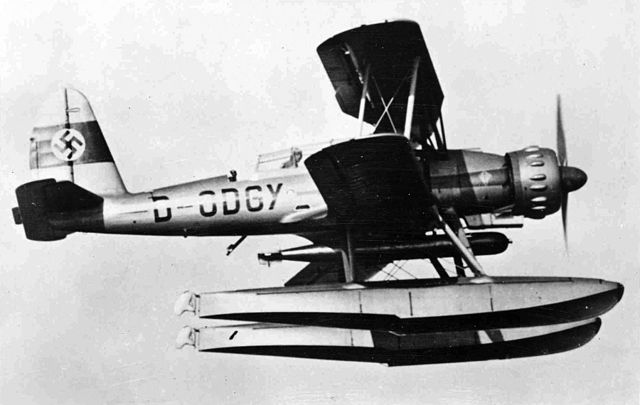
Arado 95 D-ODGY, testing aerial torpedoes
Among the most sucessful land-based models was certainly the FW-200 Condor of the Atlantic Command, which proved very useful for naval reconnaissance in the Atlantic, in particular in the uncovered mid-atlantic gap, thanks to its long range. However the new Luftwaffe coastal command operating from French, Dutch and Norwegian coasts performed attack, patrol, SAR, transport, and mostly reconnaissance. Always, land-based models made the largest tally of all, such as the Dornier 217 specially modified to carry “Fritz X” guided rocket propelled bombs to sink several ships, notably the Italian battleship Roma in September 1943.
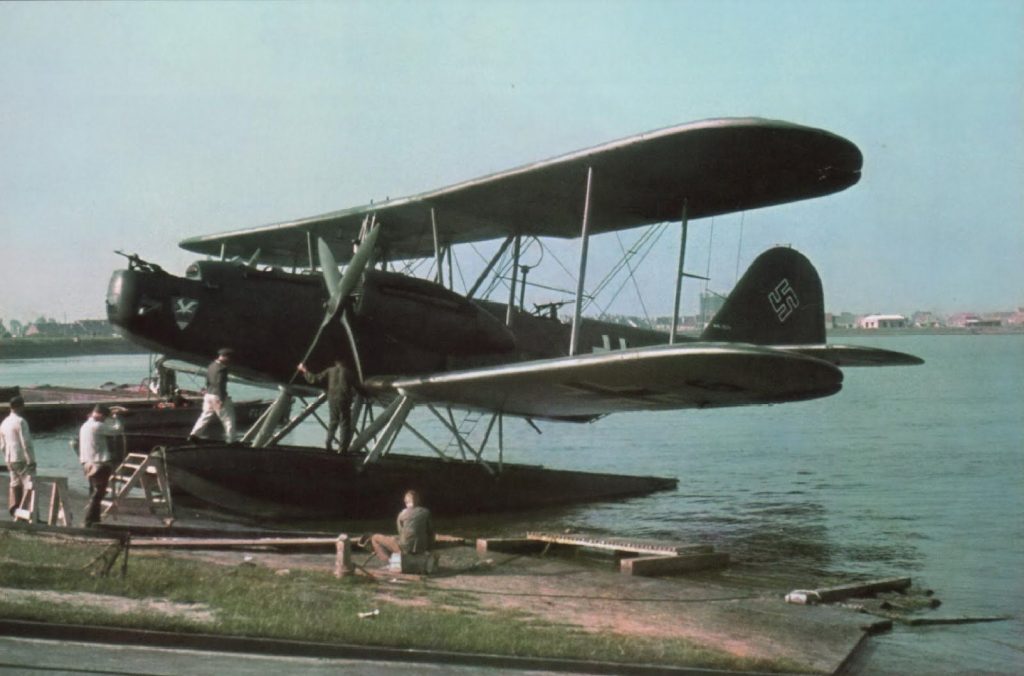
He-59A floatplane (1935). Only 142 of this model were available when WW2 broke out. Used at first for torpedo attacks and minelaying, it became a recce and SAR plane (search and rescue), gradually retired in 1942 and only retained for training.
Italian naval aviation
Aviazione Ausiliaria per la Regia Marina
The Italian fleet air arm was created before WW1 already (since 1913), and there were already quite interesting records for the Italian aviation in the Adriatic, operating against the Austro-Hungarian naval assets at sea and along the coast, and perform reconnaissance. During the interwar, the Italian Navy Royal started to plan for an aircraft carrier long before the Aquila, but were opposed by Benito Mussolini, the Duche arguing Italy, for simple geographical reasons, was already a giant “aicraft carrier” bulging into the central Mediterranean.
He also expected that Greece would ultimately fell under his banner as well, allowing the covering of the aegean sea as well and threatening Malta. It would take until the dreadful losses at Taranto in November 1940 and at losses at Cape Matapan in 1941 to drive the admiralty on the path of creating two fleet carriers again, this time with the Duce’s greenlight. Despite their effort, Aquila went close to completion when Italy surrendered in September 1943. In between the Regia Marina had to make due with its a naval aviation which was part of the air force. The service was indeed disbanded and integrated into the Italian Air Force, upon the creation of this new branch in 1937, when a law gave control of all national fixed-wing air assets to the Italian Air Force. It was only back as an independent arm in 1956.
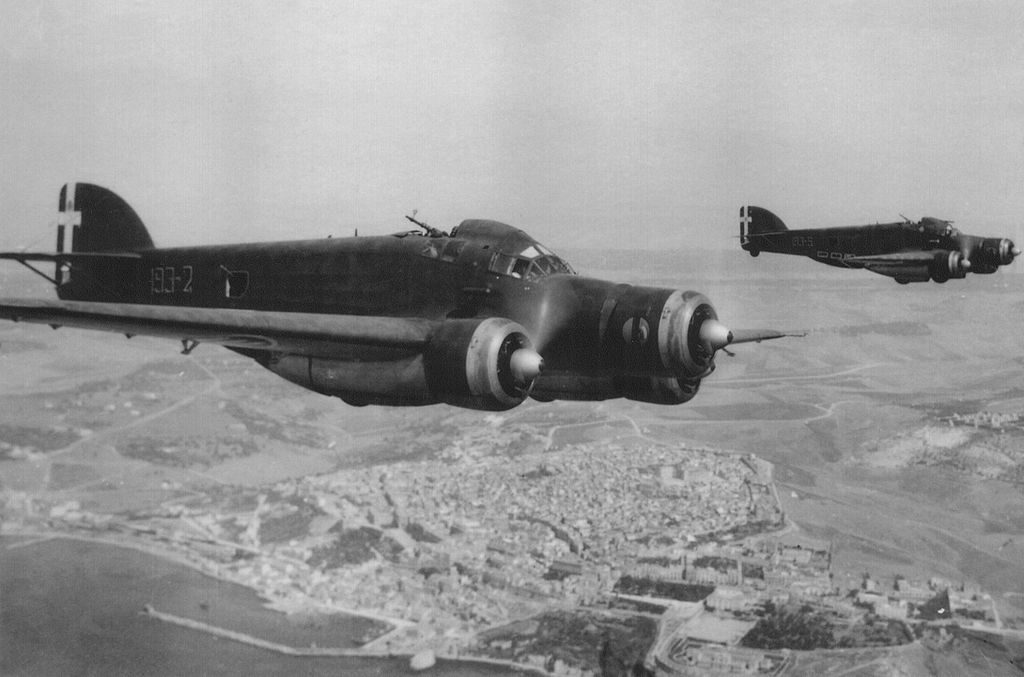
SM76 Sparviero, which proved to be a redoubtable torpedo bomber
During WW2, the poor coordination bewteen the Regia Marina and the Aeronautica Militare proved an hinderance to naval operations. Whenever this support was asked for, it was never efficient and the “aircraft carrier italy” was nothing more in reality than wishful thinking. Nevertheless, the Navy more or less operated with greater livery proper naval planes as they were of little use for the air force. That’s out main ficus here, and the associated types. Italy did not lacked both talent and engineering skills to produce escellent aircraft and it was true for seaplanes and floatplanes as well. The major issue for the industry was its inability to produce powerful aicraft engines, including inline-water cooled engines, marring performances. For this reason, the majority of Italian medium torpedo bombers and patrol/ASW floatplanes were trimotors.
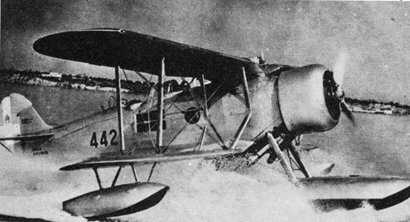
Imam Ro 43 Idro
The workhorse of the land-based aviation deployed in the benefit of the Regia Marina, but operated by the air force, was the excellent Savoi-Marchetti SM79, a fast and potent torpedo bomber.
On the pure naval side, the main recce flying boat was the single-engine IMAM Ro.43
- CANT 6 – maritime patrol flying boat (1925)
- CANT 7 – trainer flying boat (1924)
- CANT 18 – trainer flying boat (1926)
- CANT 25 – fighter flying boat (1927)
- CANT Z.501 – reconnaissance bomber flying boat (1934)
- CANT Z.506 – reconnaissance bomber and rescue floatplane (1935)
- CANT Z.508 – heavy bomber floatplane (1936)
- CANT Z.509 – transport floatplane (1937)
- CANT Z.515 – reconnaissance bomber floatplane (1939)
- CANT Z.511 – long-range military transport floatplane (1943)
- Caproni Ca.316 – maritime reconnaissance floatplane (1940)
- Fiat CR.20 Idro, single-seat fighter floatplane version (1926)
- Fiat RS.14 – long-range maritime reconnaissance floatplane (1939)
- IMAM Ro.43 – catapult launched reconnaissance floatplane (1935)
- IMAM Ro.44 – fighter floatplane (1936)
- Macchi M.18 – three-seat reconnaissance/bomber flying boat (1928)
- Macchi M.24 – three-seat reconnaissance/bomber flying boat (1923)
- Macchi M.26 – fighter flying boat (1924)
- Macchi M.40 – catapult-launched reconnaissance seaplane (1928)
- Macchi M.41 – fighter flying boat (1927)
- Macchi M.53 – reconnaissance seaplane (1928)
- Macchi M.70 – light biplane floatplane (1929)
- Macchi M.71 – fighter flying boat (1930)
- Maachi MC.73 Idro – floatplane training biplane version (1931)
- Macchi MC.77 – two-seat maritime reconnaissance flying boat (1935)
- Macchi MC.99 – military flying boat (1937)
- Piaggio P.6 – catapult-launched floatplane (1927)
- Piaggio P.8 – single-seat floatplane (1928)
- Savoia-Marchetti S.55 – twin hulled mulitrole flying boat (1924)
- Savoia-Marchetti S.56 – three-seat trainer amphibious flying boat (1924)
- Savoia-Marchetti S.57 – reconnaissance flying boat (1923)
- Savoia-Marchetti S.59 – reconnaissance/bomber flying boat (1925)
- Savoia-Marchetti SM.62 – four-seat reconnaissance/bomber flying boat (1926)
- SIAI S.13 – reconnaissance and fighter flying boat (1919)
- SIAI S.16 – bomber-reconnaissance flying boat (1919)
- SIAI S.67 – fighter flying boat (1930)
Imperial Japanese naval aviation
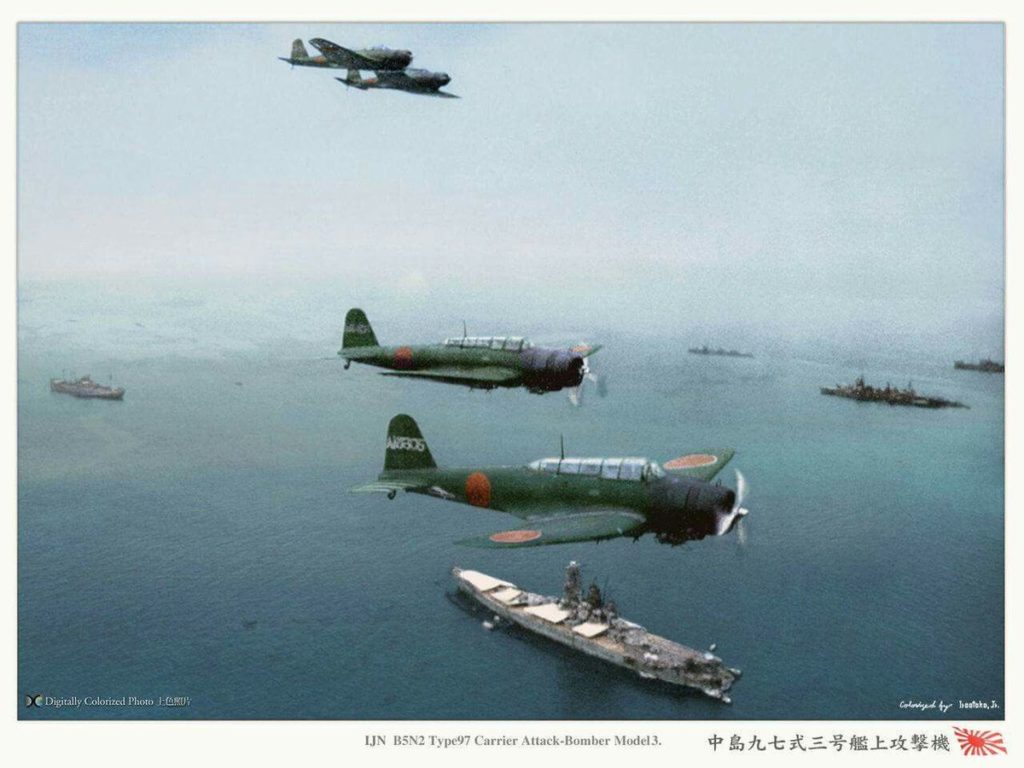
A group of Nakajima B5N2 over the fleet – Colorized by Irootoko jr.
Japanese aviation was divided between the Army and Navy models, with a great deal of rivalry between the two, a bit like the USA. A code was soon created to differenciate between the two: Two letters and a number, coding the plane origin and purpose, a Japanese symbolic name, and on top the allied intelligence code, versus the factory designation for Japanese Army planes with the Type in Imperial years. For example, the N1K “Kyofu” (Rex), where N signified “floatplane fighter”, 1 as it was the first of the factory of this type, and K for “Kawanishi”. “Rex” was the allied intelligence code. A6M for example designated the sixth type of carrier fighter under this designation system, and that it was built by Mitsubishi. Zeke was the Japanese symbolic name and “Zero” the allied code, inspired by the Imperial year code Reisen (“year zero”). Note: Foreign planes built under licence are not included there.
Fighters
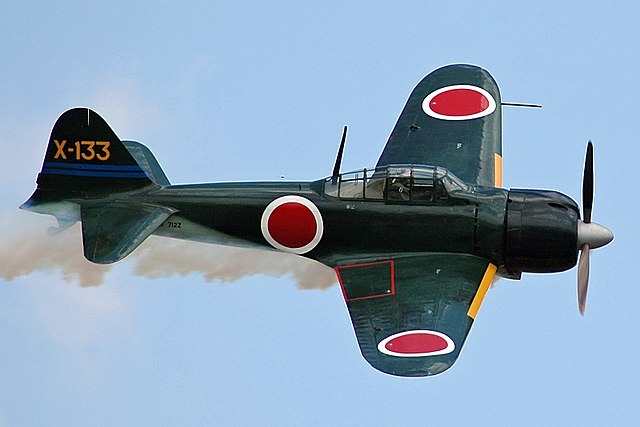
Without contest, the A6M was the most famous IJN fighter in 1941. Agile, fast, with a long range and top-tier pilots, it brushed aside all opposition until late-1942 when the Hellcat and Lightning started to be introduced. Its army equivalent was the equally agile Nakajima Ki-43 “Oscar”.
–Mitsubishi 1MF (1921) 138 built, retired 1930
-Heinkel HD 23/Aichi Type H (1926) semi experimental fighter, 4 built
-Kawanishi K-11 (1927) experimental fighter, 2 built
–Nakajima A1N (1928), based on Gloster Gambet, 151 built, retired 1935
–Nakajima A2N (1929): 166 built, retired 1941
Note: The Navy also used the Gloster Sparrowhawk from 1931, 90 were in service.
–Mitsubishi A5M (1935), main fixed-train monoplane, 1094 built, retired 1945
–Nakajima A4N (1935) 221 built, until 1940, second line 1942.
–Mitsubishi A6M Zero “Zeke” (1939): By far the most famous navy fighter. 10,939 built in any variants
–Nakajima J1N Gekko (1941) “Irving” fast twin-engine heavy fighter, 479 built
–Kawanishi N1K-J Shiden “Georges” (1943) derived from the “Rex” floatplane fighter, circa 1400 built
–Mitsubishi J2M Raiden “Jack” (1942), 621 built
–Mitsubishi A7M Reppū (1944): Planned replacement of the legendary “Zeke”, codenamed “Sam”, 10 preserie built.
–Yokosuka MXY-8 Akigusa (1945), a clone of the German Me 163 Komet, which plans and parts arrived via U-Boat. About 50-60 were built but apparently never used.
The IJN also tested the Dewoitine D.510J in 1936, the Canadian Car & Foundry AXG1 in 1938, Heinkel A7He1 (12), Seversky A8V (20) the same year, the American Douglas HXD and Fairchild LXF1, and used 20 Seversky A8V recce monoplanes.
Carrier-borne Bombers
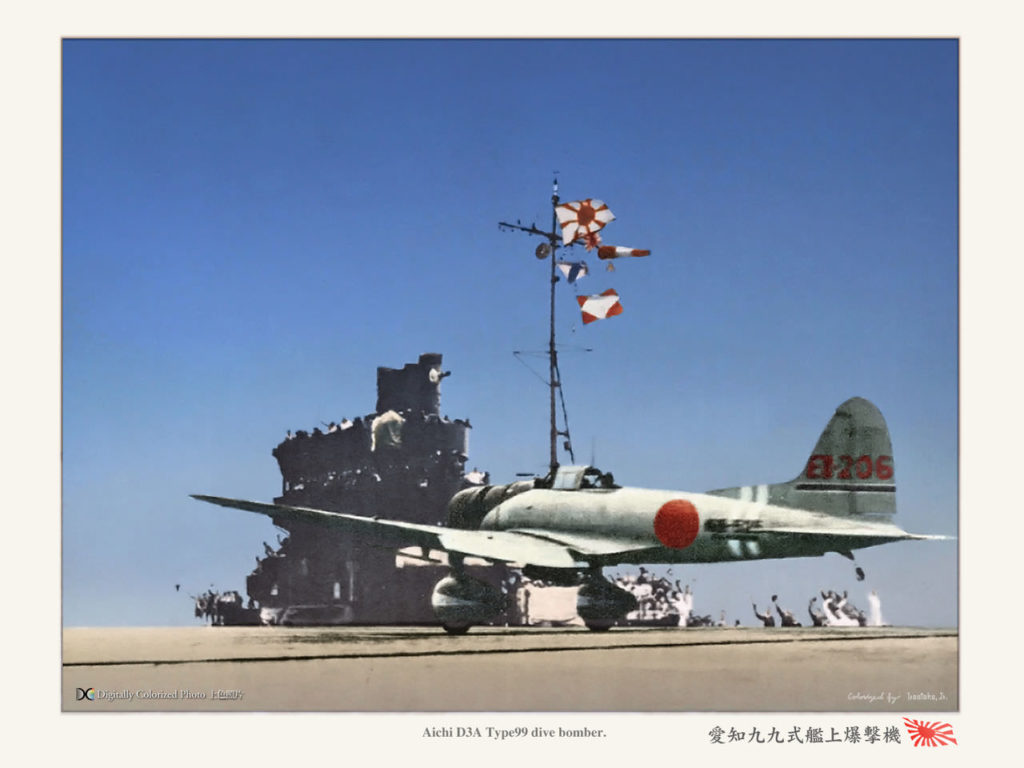
–Aichi D1A (1934) dive bomber, 590 built codename “Susie”
–Aichi D3A (1938), main IJN dive bomber, 1,486 built
–Yokosuka D4Y (1942) codename “Judy” diver bomber, 2,038 built
Navy land-based Torpedo Bombers
–Mitsubishi G3M (1935), 1,048 built, long range twin engine navy land-based bomber, codename “Nell”.
–Mitsubishi G4M (1939) “Betty”, Main long range twin engine torpedo bomber of the navy, 2,435 built
–Nakajima G5N Shinzan (1941) “liz” long-range quad-engine heavy bomber, 6 built
-The navy also experimented with the Mitsubishi Ki-67 bomber, with a torpedo-bomber, the “Yasukuni”, and a dedicated ASW plane, the Mitsubishi Q2M1 Taiyo.
–Nakajima B6N Tenzan (1941) coldename “Jill”, 1,268 built planned replacement for the “Nate”.
–Aichi B7A Ryusei “Jack” (1942), last IJN carrier-borne Torpedo bomber, 114 built
Torpedo-bombers
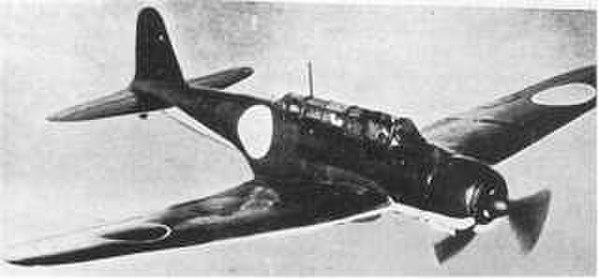
–Mitsubishi 1MT (1922), triplane 20 built retired 1928.
–Mitsubishi B1M (1923), 443 built, retired 1936.
–Mitsubishi B2M (1932) 206 built, based on Blackburn Ripon, retired 1939-1940
–Yokosuka B4Y (1935) 205 built, biplane, retired 1943
–Mitsubishi B5M (1936) fixed carriage monoplan bomber, 125 built
–Nakajima B5N (1937) 1,150 built, main torpedo bomber
–Yokosuka P1Y1 Ginga “Frances” (1943) Navy Land-Based twin engines Bomber, 1098 built
Misc.
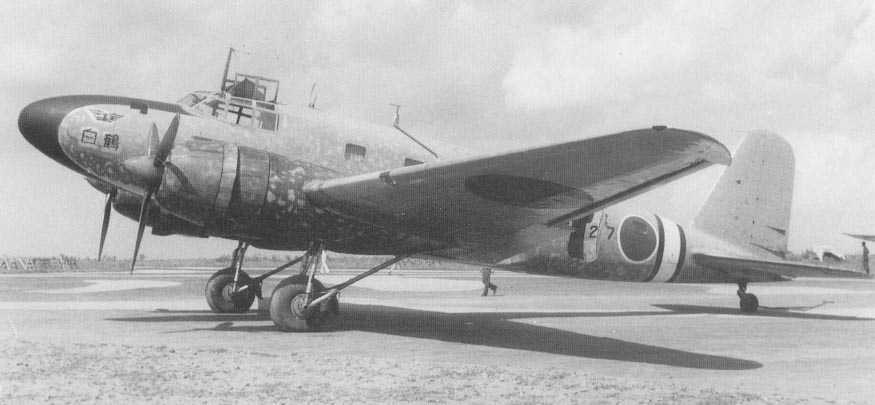
Mitsubishi MC-20-II, close to the L4M, Naval transport plane
–Yokosuka K2Y (1929), main navy trainer based on Avro 504, rarely mounted on floats. All 464 built were used by the Navy.
–Nakajima C2N (1930) staff carrier developed with Fokker, used by the navy and army (Ki-6), prod. unknown
–Mitsubishi K3M (1930), navy trainer and liaison, recce, 625 built, retired 1940s
–Mitsubishi 2MR (1932), carrier-based recce biplane, 159 built, retired 1937-38 as trainers
–Yokosuka K5Y (1934) 5,770 main IJN biplane trainer, with undercarriage or floats, used during WW2
–Hiro G2H (1933) 8 long-range recce/bomber land-based biplanes, most destroyed at Cheju Island in 1937
–Gasuden KR-2 (1934), light transport biplane, small prod.
-Nakajima C3N (1936) experimental recce monoplane with fixed undercarriage
-Nakajima L1N (1936) main transport monoplane twin engine, 351 built
–Mitsubishi L4M (1939) main twin-engine transport plane, 406 built
–Nakajima/Showa L2D (1939) large navy transport plane codenamed “Tabby”, DC-3 copy.
-In 1939 also first flew the Nakajima LXD-1, transport four-engined prototype.
-Kyushu K9W1 Momiji (1942) biplane trainer based on the Bücker Bu-131, 339 built
–Kyushu K11W1 Shiragiku (1942) monoplane advanced operations trainer, 798 built
–Nakajima C6N Saiun “Myrt” (1943) Navy Carrier Reconnaissance Plane, the fastest built by Japan, 463 built.
–Yokosuka MXY-7 Ohka (1944) codename “Baka” the famous suicide rocket plane, 852 built
Floatplanes & seaplanes
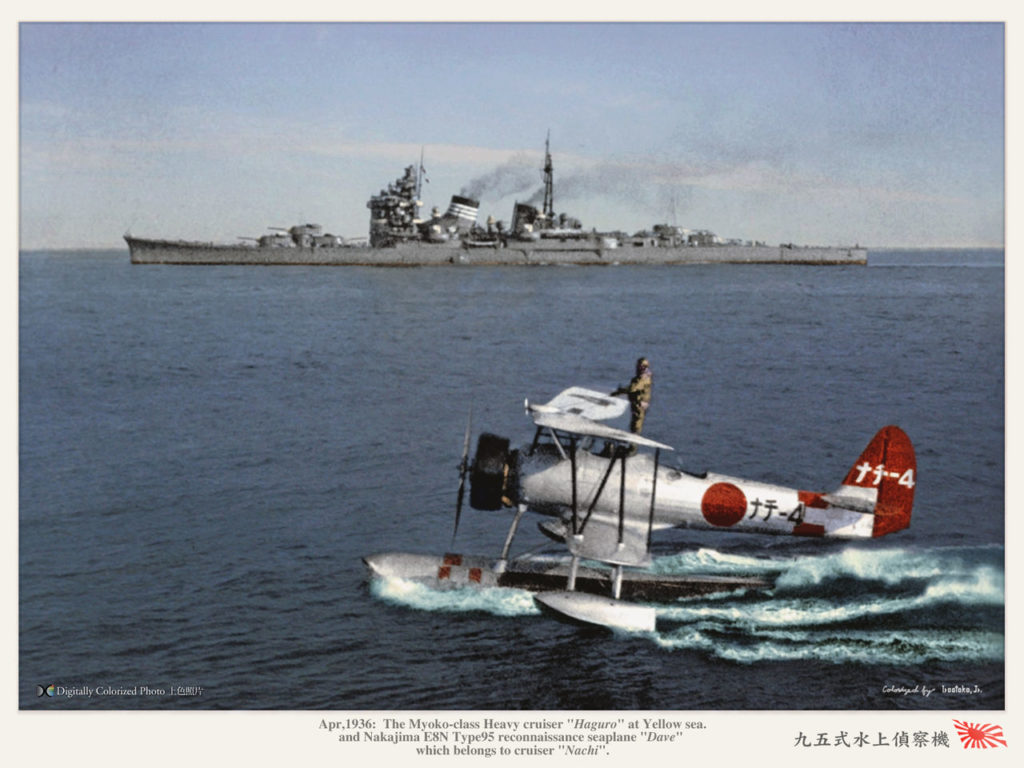
IJN Haguro and IJN Nachi’s Nakajima E8N (Type 95) “Nate” recce plane – colorized bi Iroo Toko Jr.
–Yokosho Rogou Kougata (1918), 218 built, retired 1928
–Yokosuka K1Y (1925) Main trainer/spotted floatplane of the Navy, 104 built, retired 1941
–Hiro H1H (1925) recce and ASW patrol seaplane, 60 built, retired 1938
-Aichi Type 15-Ko Mi-go (1925), semi-experimental seaplane, 4-5 built
–Yokosuka E1Y (1926): Main recce floatplane, 320 built, retired 1938
-Aichi Navy Type 2 (1928), experimental floatplane
–Nakajima E2N (1929): 80 built, retired in the late 1930s
–Yokosuka E6Y (1929), submarine-based recce floatplane, 10 built, retired 1943
–Yokosuka K4Y (1930), trainer/recce floatplane, 211 built, retired 1940s.
–Yokosuka E5Y (1930) 20 built, recce floatplane. Used by NOTORO, phased out late 1930s
–Aichi E3A (1930): Recce floatplane dev. with Heinkel, 20 built
–Nakajima E4N (1930), recce floatplane, 153 built, retired late 1930s
–Hiro H4H (1933) recce seaplane, 47 built, retired 1940
–Kawanishi E7K (1934) main recce floatplane, 533 built, served in WW2
–Nakajima E8N (1935) Main recce floatplane, 755 built, served WW2 codename “Pete”
-Kawanishi E10K (1934) experimental transport/recce floatplane
–Kawanishi H6K (1936) four engine flying boat, 215 built.
–Mitsubishi F1M (1936) 944 recce, last biplane floatplanes in the IJN
–Yokosuka H5Y (1936) Type 99 Flying Boat Model 11, 20 built
-Watanabe K6W (1937) experimental florplane trainder/recce
–Aichi E11A (1937) 17 gunnery spotting seaplanes (E11A Type 98)
-Kawanishi E11K (1937), two transport flying boats
-Nakajima E12N (1938), 2 recce floatplanes
-Nippi K8Ni1 (1938), 2 trainer floatplanes
–Watanabe E9W (1938) 35 shipboard recce biplanes
-Watanabe K8W (1938) 3 built, recce seaplane trainers
–Aichi E13A (1938) main recce monoplane floatplane, 1,418 built
-Kawanishi E13K (1938) 2 built, 3-seat shipboard recce.
-Kawanishi K6K (1938) seaplane trainer, 3 built
-Kawanishi K8K (1938), same, 15 built
-Nippi K8Ni1 (1938), same, prototype
-Nakajima E12N (1938), recce floatplane, 2 built
–Aichi H9A (1940), recce seaplane, 31 built
–Nakajima E14Y (1939), shipboard recce floatplane, 126 built
–Kawanishi E15K Shiun (1941) codename “Norm”, 15 built, floatplane Torpedo bomber
–Kawanishi H8K (1941) codename “Emily”, main long-range aquad-engine, 167 built
–Kawanishi N1K1 Kyofu (1942) “Rex”, main IJN floatplane fighter, variant, land-based fighter Kawanishi N1K-J Shiden- 1,532 built.
–Aichi M6A1 Seiran (1943) Navy Special Strike Submarine Bomber developed for the I-400 submarines, 28 built.
-Also was tested a flotplane trainer, the Aichi M6A1-K Nanzan Navy Special Strike Submarine Bomber trainer (1943, 2 built) and the Kyushu Q1W1-K Tokai-Ren, a twin-engine the same year codenamed “Lorna”.

Author’s illustration of the H8K “Emily”
Soviet naval aviation
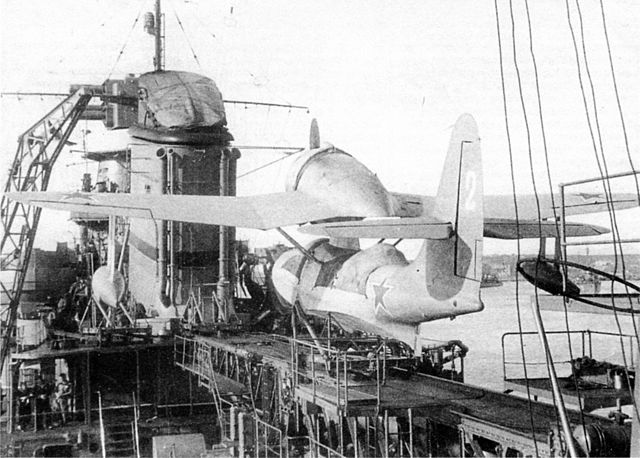
History
Soviet naval aviation (Morskaya Aviatsiya) was initially created under another name, in 1918: the Workers and Peasants Red Air Fleet. Prior to that, it inherited from the Emperor’s Military Air Fleet (1909–1917). This had oc creation of the “reds” participated in the Russian Civil War, cooperating with ships and army at Petrograd, on the Baltic and Black Sea, as well as over the Volga, Kama, Dvina rivers and Lake Onega. It was a hotchpotch of some 76 obsolete hydroplanes with poor maintenance and unskilled staff. Due to its condition it was used mostly for reconnaissance and supplies.
However when the Soviet Army and air forced consolidated in the 1920s, Naval Aviation started to increase in capabilities. Thanks to a first 5-year plan, it receive a massive influx of new reconnaissance hydroplanes, but also coastal defence bombers and fighters. By the mid-1930s, it grew so large that it needed to be separated, by creating at first the Baltic, Black Sea andt Pacific Fleet own naval aviation branches. In 1938–1940, Soviet Naval Aviation became a very important components of the Soviet Navy, with formations of torpedo and bomber planes. The Great Patriotic War the two fleets of the Black sea and Baltic combined some 1,445 aircraft, most of these being the Beriev MBR-2.
During the war, Naval Aviation provided air support to the Soviet Navy over the Barents sea, the Baltic and Black Sea as well as the Sea of Okhotsk.
It was composed almost exclusively of land and shore based planes, since the limited size of the Navy saw few ship-based planes in action: Thos of the three Gangut-class battleships, and about seven cruisers. Flying boats were of course the most recoignised asset of the Navy, using specific aircraft, while torpedo-bomber units relied on air force models, converted in some cases to carry torpedoes or equipped with floats. In some cases, transport plaanes of the Navy were used for land operations, in support of the Red Army during coastal offensives, but also landings and special wartime joint army-navy operations. Air cover to Allied convoys in North Sea and up to the Barents Sea was also one of its missions, as well as in the north Pacific and Sea of Okhotsk.
Naval Aviation was noted in the defense of Odessa in June–October 1941 (Crimean campaign) where naval troops were very active. The Black Sea fleet air arm also carried out many air strikes during the 1944 offensive. In terms of sunken ships it was quite successful, achieving a 2/3 better success ratio than any other unit of the Soviet Navy. In all, 17 naval aviation units were awarded the title of ‘Soviet Guards’ and 241 naval air personal were awarded the title of the Hero of the Soviet Union, some pilots twice.
Units:
-1st Guards Fighter Aviation Division VVS VMF
-2nd Torpedo Rananskaya Red Banner Aviation Division in the name of N.A. Ostryakova VVS VMF
-3rd Bombardment Aviation Division VVS VMF
-4th Bombardment Aviation Division VVS VMF
-5th Torpedo Aviation Division VVS VMF
-6th Bombardment Aviation Division VVS VMF
-7th Bombardment Aviation Division VVS VMF
-8th Torpedo Gatchinskaya Red Banner Aviation Division VVS VMF
-9th Assault Ropshinskaya Red Banner, Order of Ushakov Aviation Division VVS VMF
-10th Seysinskaya Red Banner Aviation Division of Dive Bombers VVS VMF
-11th Assault Novorossiysk Twice Red Banner Aviation Division VVS VMF
-12th Assault Aviation Division VVS VMF
-13th Aviation Division of Dive Bombers VVS VMF
-14th Mixed Aviation Division VVS VMF
-15th Mixed Aviation Division VVS VMF
-16th Mixed Aviation Division VVS VMF
List
Grigorovich M-24 & M-24bis – coastal reconnaissance flying boat (1922)
Tupolev MP-6 – twin-engine floatplane (1923)
Grigorovich M-23 & M-23bis – single-engined training or reconnaissance flying boat (1923)
Tupolev ANT-4 – twin-engine torpedo bomber floatplane version (1925)
Shavrov Sh1 & Sh-2 – general-purpose amphibious flying boat (1929)
Tupolev ANT-8 – twin-engine patrol bomber flying boat (1931)
Beriev MBR-2 – short-range reconnaissance/bombing flying boat (1932)
Tupolev ANT-22 – 6-engine, twin-hull flying boat (1934)
Tupolev MTB-1 – trimotor patrol bombe flying boat (1934)
Shavrov Sh-5 – twin-engined survey amphibious flying boat (1934)
Chetverikov OSGA-101 – three-seat experimental amphibian (1934)
Chetverikov SPL – two-seat submarine-borne reconnaissance flying boat (1935)
Beriev KOR-1 (Be-2) – two-seat reconnaissance floatplane (1935)
Shavrov Sh-3 – light transport amphibious flying boat (1936)
Tupolev MTB-2 – 4-engine bomber/transport flying boat/amphibian (1937)
Beriev MBR-7 – short-range reconnaissance/bombing flying boat (1937)
Beriev MDR-5 – long-range maritime reconnaissance/bombing flying boat (1937)
Chetverikov MDR-6 (Che-2) – three-seat coastal reconnaissance flying boat (1939)
Shavrov Sh-7 – amphibious flying boat (1940)
Beriev KOR-2 (Be-4) – two-seat reconnaissance flying boat (1940)
Floatplane/Seaplane models:
Beriev MBR-2 (1931)
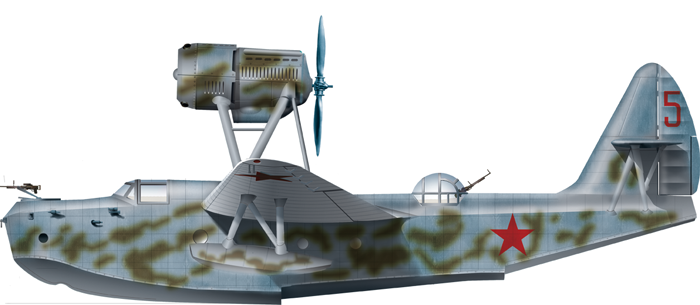
A well-known patrol multi-purpose flying boat which entered service with the Soviet Navy in 1935. Out of 1,365 built, 9 were exported, notably Finland and North Korea. It was nicknamed “Kорова” and “Амбар” and stayed the beast of burden of coastal patrols in WW2, with a production from 1935 up to 1941.
Beriev BE-2 (KOR-1) (1936)
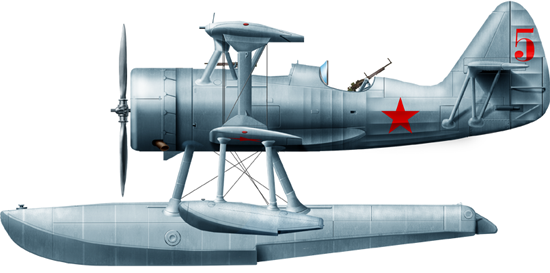
The small cruiser-based KOr-2 was the default observation plane in the Soviet Navy in the late interwar. This two-seat reconnaissance seaplane was designed to replace the Navy’s obsolete license-produced Heinkel He 55 and only 12 were delivered to the Navy for cruisers and battleships use, in service 1938-42.
Beriev BE-4 (KOR-2) (1940)
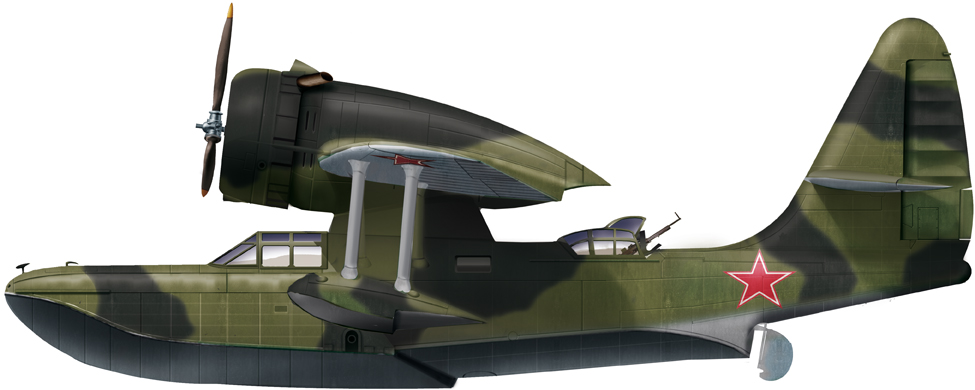
BE-4 at Krasnoyarsk Base, Siberia, fall 1944
The Beriev Be-4 was a reconnaissance flying boat built to operate from Soviet warships during World War II, logical successor of the BE-2. It was far more sturdy, faster, and has almost twice the range, but only 47 were delivered in 1941-42.
Shavrov Sh-2 naval ambulance (1930)
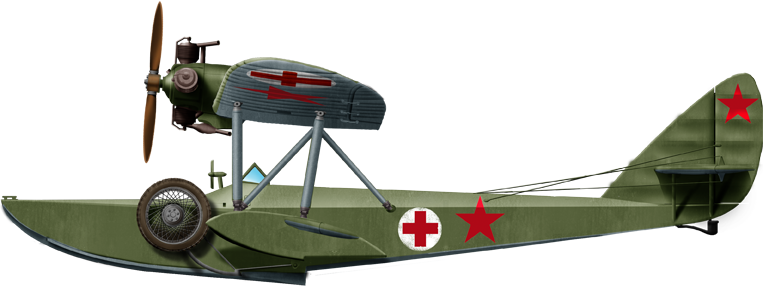
The Shavrov Sh-2 was a 1930s amphibian, first Soviet mass-produced flying boat. It could carry two crew members and one passenger, also equipped with skis in winter. Light, simple and reliable it was still in service in limited numbers out of a production of 700, in 1941 in roles such as flying ambulance, liaison, and training.
Chetverikov MDR-6/Che-2 (1937)

The Chyetverikov MDR-6 was a late 1930s reconnaissance flying-boat aircraft. It was also the only successful aircraft designed by Igor Chyetverikov bureau. 27 were built from 1939 and it served until 1945.
Ilyushin DB-4T (1936)
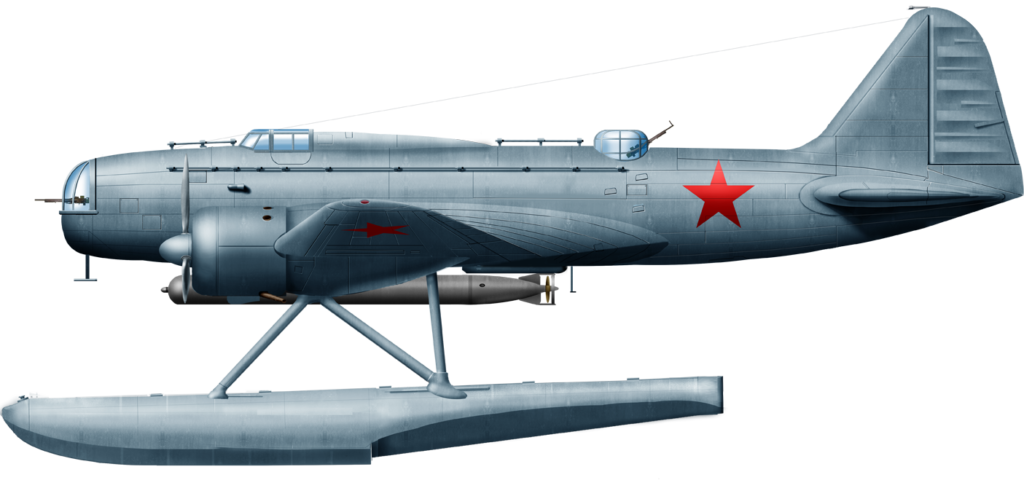
The famous VVS Ilyushin Il-4 was used as a long-range bomber and was also declined into a successful floatplane torpedo-bomber, the DB-4T used by Soviet coastal squadrons. It could carry two regular naval torpedoes, as well as up to 2,700 kg (6,000 lb) of bombs or mines.
Tupolev MR-6 (1932)
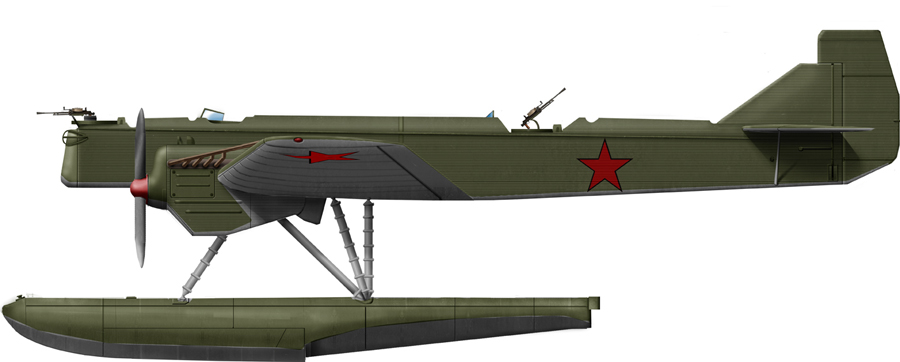
Inspired by Heinkel models, the all-metal cantilever monoplane twin engine reconnaissance Tupolev R-6 was also used by the Navy as the MR-6, equipped with floats. MR-6
stands for Morskoj razvyedchik, maritime reconnaissance (also sometimes called “KR-6P”). It was also used as a torpedo bomber version from 1932 and still used for training in 1939-40. It was retired in 1941 for good. The MP-6 2M-17 was a seaplane passenger transport powered by two 507.1 kW (680 hp) Mikulin M-17 V-12 engines.
Tupolev MBT-1 (1934)
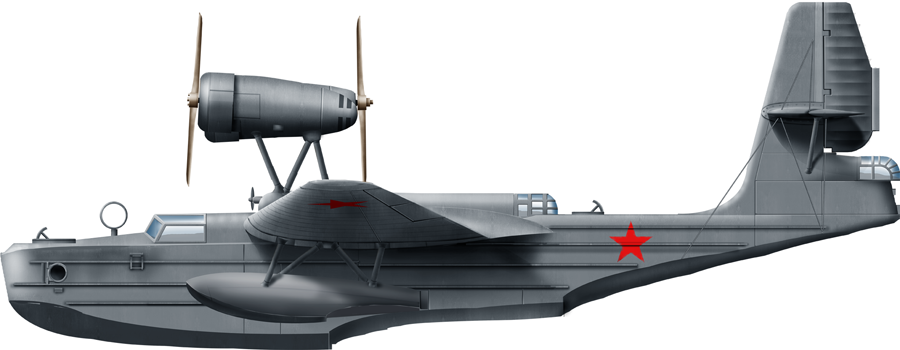
The Tupolev MTB-1 (MDR-4, factory ANT-27) was a patrol flying boat designed as a refined version of the unsuccessful Chyetverikov MDR-3. It kept the MDR-3’s hull, but with a new full-cantilever wing, tail, and engine installation with two tractor and one pusher. The second prototype designated MTB-1 was to be used in a torpedo-carrying role. It was accepted for production before the end of the tests and 15 were produced, remaining in service until 1942.
Tupolev MBT-2 (1937)
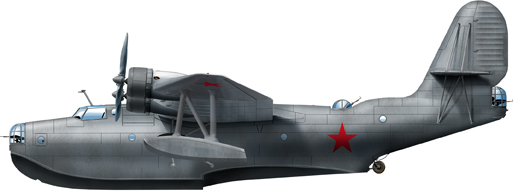
Certainly much more ambitious, the Tupolev MTB-2 was marked as an Heavy Naval Bomber and flying boat (internally ANT-44), with four-engine. Two prototypes were built and performance was good but it was decided to prioritize land-based bombers which could already care for the needs of the Soviet Naval Aviation and it was cancelled in 1940. However the second prototype fought and served actively in WW2 in the black sea.
Land-based Soviet naval aircraft:
Tupolev R-6 of a pacific squadron, 1939
One of the remaining R-6 of the land-based coastal squadrons still used for training and patrols in 1939-40. It was retired in 1942.
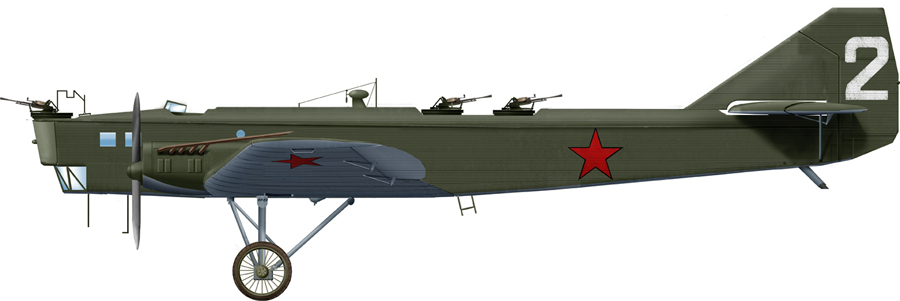
Tupolev TB-1 used for training in 1939

Ilyushin DB-4 used by the coast guard

Tupolev ANT-9 Naval transport plane
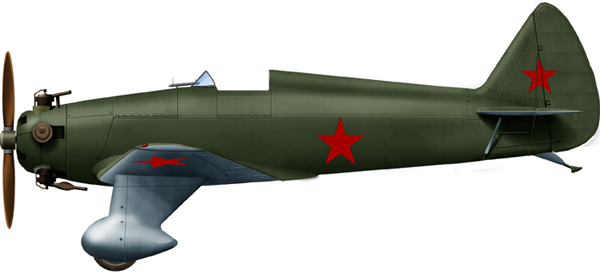
Yakovlev UT-1 navy trainer
British Fleet air arm
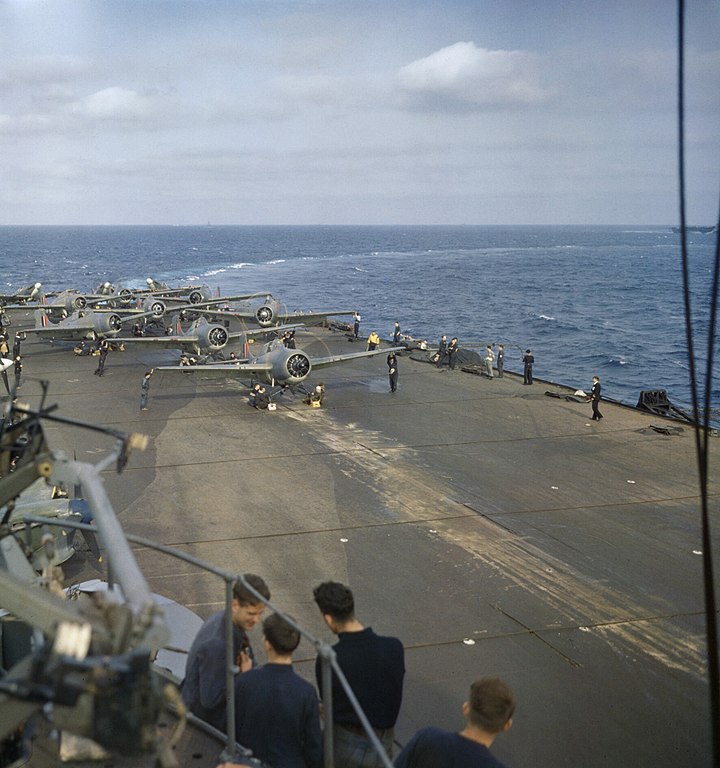
Many British naval vessels carried float planes, seaplanes or amphibians for reconnaissance and spotting on battleships or battlecruisers and on cruisers. The common model was the Fairey Seafox biplane floatplane, superseded by the larger Supermarine Walrus seaplane. Both were catapult-launched, landing at sea and recovered by crane.
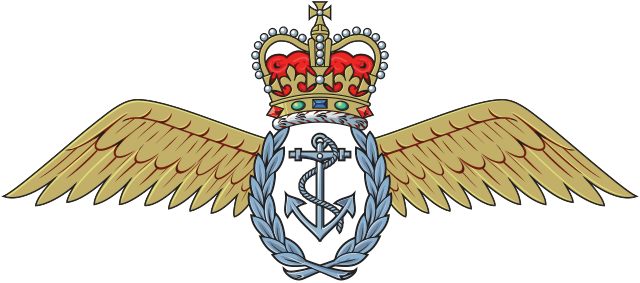
British Seaplanes and naval planes List
Supermarine Channel – (1919)
Vickers Viking – amphibious flying boat (1919)
Supermarine Sea Lion I – Schneider Trophy racing seaplane (1919)
Saunders Kittiwake – amphibious flying boat (1920)
Supermarine Sea King – fighter flying boat (1920)
Fairey Pintail – two-seat fighter/reconnaissance biplane amphibian (1920)
Short N.3 Cromarty – flying boat (1921)
Supermarine Seal II – deck-landing fleet-spotting amphibian (1921)
Vickers Vanellus – fleet-spotter amphibious flying boat (1922)
Supermarine Seagull – spotter/reconnaissance flying boat (1922)
Supermarine Sea Lion II – Schneider Trophy racing seaplane (1922)
Fairey Flycatcher – single-seat fighter floatplane (1922)
Fairey N.4 – five-seat long-range twin-engine biplane reconnaissance flying boat (1923)
de Havilland DH.50 – single-engine transport – some fitted as floatplanes (1923)
Supermarine Sea Eagle – amphibious flying boat (1923)
Vickers Vulture – amphibious flying boat (1924)
Supermarine Swan – 10-passenger flying boat (1924)
Short S.1 Stellite/Cockle – small single-seat flying boat (1924)
Supermarine Scarab – reconnaissance/bomber flying boat (1924)
Fairey Fremantle – long-range reconnaissance biplane floatplane (1924)
Gloster II – racing floatplane for 1924 Schneider Trophy (1924)
English Electric Ayr – three-seat coastal patrol flying boat (1924)
English Electric Kingston – reconnaissance flying boat (1924)
Beardmore Inverness – monoplane flying boat (1925)
Gloster III – racing seaplane for 1925 Schneider Trophy (1925)
Saunders A.4 Medina – passenger flying boat (1925)
Hawker Dantorp – 3-seat bomber floatplane (1925)
Blackburn Velos – two-seat coastal defence seaplane (1925)
de Havilland DH.60 Moth – two-seat sportplane – some fitted as floatplanes (1925)
Supermarine S.4 – Schneider Trophy racing monoplane floatplane (1925)
Supermarine Southampton – reconnaissance flying boat (1925)
Short S.5 Singapore I – prototype reconnaissance biplane flying boat (1926)
Short S.7 Mussel – small seaplanes for float testing (1926)
Blackburn Iris – five-seat long-range reconnaissance flying boat (1926)
de Havilland DH.61 Giant Moth – single-engine transport – three fitted as floatplanes (1927)
Gloster IV – racing seaplane for 1927 Schneider Trophy (1927)
Saunders A.3 Valkyrie – three-engined military flying boat (1927)
Gloster Goring – prototype bomber, tested as a seaplane (1927)
Short S.6 Sturgeon – prototype reconnaissance biplane floatplane (1927)
Supermarine S.5 – Schneider Trophy racing monoplane floatplane (1927)
Short-Bristol Crusader – racing seaplane (1927)
Short S.8 Calcutta – three-engined commercial biplane flying boat (1928)
Saro A.14 – prototype flying boat (1928)
Blackburn Nautilus – two-seat biplane fleet spotter/fighter floatplane (1929)
Saro A.17 Cutty Sark – lightweight amphibious flying boat (1929)
Gloster VI – racing seaplane for 1929 Schneider Trophy (1929)
Short Gurnard – prototype naval fighter-reconnaissance biplane (1929)
Hawker Osprey – 2-seat fighter/reconnaissance biplane floatplane (1930)
Saro A.7 Severn – flying boat (1930)
Saro A.19 Cloud – twin-engined flying boat (1930)
Saro Windhover – three-engined flying boat with additional stub wing over main wing (1930)
Short Rangoon – military biplane flying boat (1930)
Short Valetta – survey floatplane (1930)
Short S.12 Singapore II – prototype reconnaissance biplane flying boat (1930)
Fairey Seal – two-seat reconnaissance floatplane (1930)
Supermarine S.6 – Schneider Trophy racing monoplane floatplane, last winner of the Schneider Cup (1931)
Short S.15 – prototype long-range biplane flying boat (1931)
Short Kent – biplane airmail flying boat (1931)
Supermarine Air Yacht – flying boat (1931)
Blackburn Sydney – three-engine, monoplane reconnaissance flying boat (1931)
Short Sarafand – six-engined long-range military biplane flying boat (1932)
de Havilland DH.83 Fox Moth – 4-seat light transport and bush plane floatplane (1932)
Short Knuckleduster – monoplane flying boat (1933)
Saro London – coastal patrol flying boat (1934)
Short Seaford – four-engined long-range maritime reconnaissance/bomber flying boat (1934)
Short S.19 Singapore III – six-seat general reconnaissance biplane flying boat (1934)
Fairey S.9/30 – biplane torpedo bomber floatplane (1934)
Fairey Swordfish – biplane torpedo bomber floatplane (1934)
de Havilland Hornet Moth – single-engine 2-seat cabin biplane floatplane (1934)
Blackburn Perth – five-seat long-range reconnaissance flying boat (1934)
de Havilland DH.89 Dragon Rapide – twin-engine 9-seat feeder-liner – some in Canada used with floats (1934)
de Havilland DH.90 Dragonfly – twin-engine luxury touring plane – some in Canada fitted with floats (1935)
Supermarine Scapa – reconnaissance flying boat (1935)
Short Scion Senior – four-engined nine-passenger floatplane (1935)
Short Empire – four-engined long-range commercial flying boat (1936)
Short S.26 – four-engined long-range commercial flying boat (1936)
Supermarine Stranraer – reconnaissance flying boat (1936)
Supermarine Walrus – spotter/reconnaissance flying boat (1936)
Fairey Seafox – two-seat spotter reconnaissance floatplane (1936)
Supermarine Seagull ASR-1 – Rolls Royce Griffon-powered monoplane
Airspeed AS.30 Queen Wasp – pilotless target floatplane (1937)
Short Sunderland – four-engined long-range maritime reconnaissance/bomber flying boat (1937)
Supermarine Sea Otter – reconnaissance air/sea rescue flying boat (1938)
Short S.30 Empire – four-engined long-range commercial flying boat (1938)
Short S.33 Empire – four-engined long-range commercial flying boat (1938)
Short S.20 Mercury – flying-boat-launched four-engined long-range floatplane mail-carrier (1938)
Short S.21 Maia – seaplane-carrier four-engined flying boat (1938)
Saro A.33 – four-engined flying boat (1938)
Saro Shrimp – experimental reconnaissance flying boat (1939)
Blackburn B-20 – reconnaissance flying boat (1940)
Saro Lerwick – twin-engined reconnaissance flying boat (1940)
Supermarine Spitfire Floatplane – fighter seaplane (trials 1940–42)
Short Sandringham – four-engined long-range commercial flying boat converted from Short Sunderland (1943)
Short Shetland – large military and commercial long-range flying boat (1944)
Canadian Fleet air arm

Work in Progress
List
Canadian Vickers Vedette – three-seat single-engine biplane flying boat (1924)
Canadian Vickers Varuna – twin-engine fire fighting transport flying boat (1927)
Canadian Vickers Vista – single-engine single-seat monoplane flying boat (1927)
Canadian Vickers Vanessa – four-passenger cabin floatplane (1927)
Canadian Vickers Velos – twin-engine survey floatplane (1927)
Canadian Vickers Vancouver – twin-engine firefighting transport/patrol flying boat (1929)
Boeing-Canada A-213 Totem – four-passenger monoplane flying boat (1930)
Fairchild Super 71 – single-engine bushplane (1934)
Fairchild 82 – single-engine high-wing monoplane bushplane (1935)
Noorduyn Norseman – cabin monoplane bushplane (1935)
Fairchild Sekani – twin-engine bushplane (1937)
Fleet 50 Freighter – Twin-engined biplane bushplane (1938)
Fleet 80 Canuck – two-seat touring floatplane version (1945)
French Fleet air arm
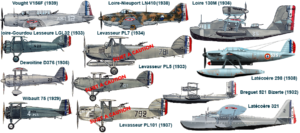 The French colonial empire and needs of the Navy were served by an independent naval air service, created on 20 March 1912. Called the Aéronavale it was long based in Toulon, Mediterranean and was very active in WW1 already in the ASW patrol role, reconnaissance, laison and attack with a large variety of models, land-based, and ship-based from seaplane tenders. The earliest of this was the cruiser Foudre, rebuilt for that purpose in 1912. During the interwar, it was provided the role of ship-based reconnaissance, split between catapult-launch models on cruisers and battleships, from the Commandant Teste seaplane carrier in 1930, and carrier-borne models with the Béarn aircraft carrier from 1928. The rest were long-range models, used in part by the civilian long-range transport lines to the far east (Notably Latécoère models) and coastal patrol amphibians.
The French colonial empire and needs of the Navy were served by an independent naval air service, created on 20 March 1912. Called the Aéronavale it was long based in Toulon, Mediterranean and was very active in WW1 already in the ASW patrol role, reconnaissance, laison and attack with a large variety of models, land-based, and ship-based from seaplane tenders. The earliest of this was the cruiser Foudre, rebuilt for that purpose in 1912. During the interwar, it was provided the role of ship-based reconnaissance, split between catapult-launch models on cruisers and battleships, from the Commandant Teste seaplane carrier in 1930, and carrier-borne models with the Béarn aircraft carrier from 1928. The rest were long-range models, used in part by the civilian long-range transport lines to the far east (Notably Latécoère models) and coastal patrol amphibians.
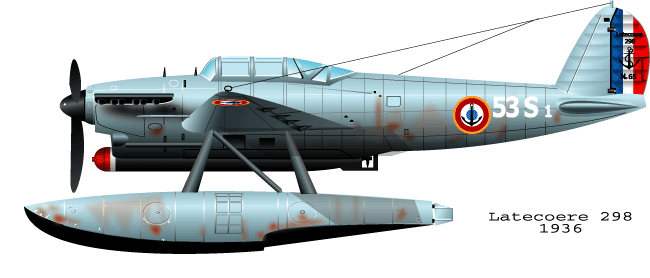
Latecoere 298 (1938), a successful modern torpedo bomber floatplane.
The 6-engines Latecoere 631 on Biscarosse lake (SW France).
The Commandant teste seaplane carrier (1929)
Vought 156F on board the carrier Béarn, 1940
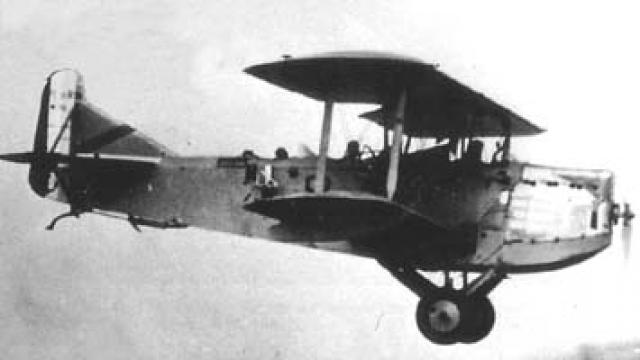
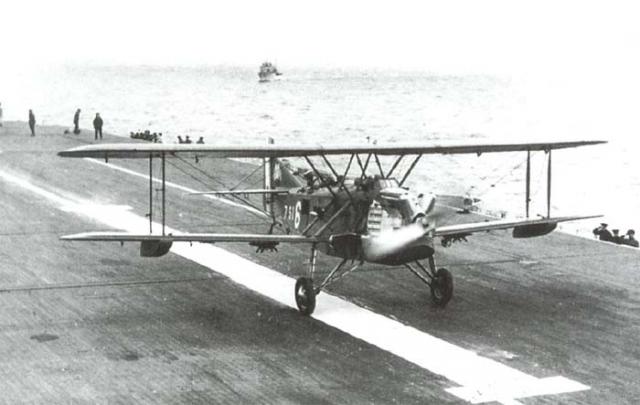
Levasseur PL-10.1 or 101, carrier-borne reconaissance and torpedo-bomber models. They were caracterised by a boat-like fuselage and could stay afloat if ditch as sea.
List
- Bellanger-Denhaut 22 (HB.3) – twin-engined bomber/reconnaissance flying-boat (1920s)
- Bernard H.52 – single-seat floatplane fighter (1933)
- Bernard H.110 – single-seat floatplane fighter (1935)
- Bernard H.V.40 – single-seat racing seaplane (1931)
- Bernard H.V.42 – single-seat racing seaplane (1931)
- Bernard H.V.120 – single-seat racing seaplane (1930)
- Bernard H.V.220 – single-seat racing seaplane (not flown)
- Besson H-3 – touring flying boat (1921)
- Besson H-5 – quadruplane transport flying boat (1922)
- Besson H-6 – single-seat postal flying boat (1921)
- Besson LB – coastal patrol flying boat (1917)
- Besson MB.26 – two-seat reconnaissance/fighter floatplane (1925)
- Besson MB.35 – two-seat spotter/reconnaissance floatplane (1926)
- Besson MB.36 – transport flying boat (1930)
- Besson MB.410 & 411 – submarine reconnaissance floatplane (1932)
- Blanchard BB-1 – racing flying boat (1924)
- Blanchard Brd.1 – bomber/reconnaissance flying boat (1922)
- Blériot-SPAD S.XIV – single-seat fighter seaplane (1917)
- Blériot 290 – light amphibious flying boat (1931)
- Blériot 5190 – long-range mail-carrying flying boat (1933)
- Borel Type Bo.11 – two-seat general-purpose floatplane (1911)
- Borel-Odier Type Bo-T – torpedo reconnaissance floatplane (1916)
- Borel-Odier Type Bo-C – 10-passenger floatplane (1919)
- Breguet Type V – floatplane racer version entered in Schneider Cup (1912)
- Breguet 521 & 522 Bizerte – 8-seat long-range maritime flying boat (1933)
- Breguet 530 Saigon – civil Breguet 521 (1935)
- Breguet 730 & 731 – long-range maritime reconnaissance flying boat (1938)
- Breguet 790 Nautilus – coastal patrol flying boat (1939)
- Breguet S.8/2 Calcutta – militarised licensed version of Short Calcutta (1932)
- CAMS 30 – two-seat training flying boat (1922)
- CAMS 31 – single-seat fighter flying boat (1922)
- CAMS 33 – coastal reconnaissance and bombing flying boat (1923)
- CAMS 36 – racing flying boat (1922)
- CAMS 37 – flying boat (1926)
- CAMS 38 – single-seat racing flying boat (1923)
- CAMS 46 – two-seat basic training flying boat (1926)
- CAMS 53 – passenger and mail-carrying flying boat (1928)
- CAMS 55 – maritime reconnaissance and bombing flying boat (1927)
- CAMS 58 – passenger and mail transport flying boat (1931)
- Deperdussin Monocoque – floatplane racer that won the first Schneider Cup (1913)
- Dewoitine HD.730 – two-seat observation/scout floatplane (1940)
- Dewoitine HD.780 – fighter floatplane based on D.520 (1940)
- Donnet-Denhaut DD.2 – flying boat (1910s)
- Donnet-Denhaut DD.8 – coastal reconnaissance and patrol flying boat (1917)
- Donnet-Denhaut DD.9 – flying boat (1910s)
- Donnet-Denhaut DD.10 – flying boat (1918)
- Donnet-Denhaut HB.2 – two-seat bomber flying boat (1910s)
- Donnet-Leveque Type A – flying boat (1912)
- Donnet-Leveque Type B – flying boat (1910s)
- Donnet-Leveque Type C – flying boat (1910s)
- F.B.A-Leveque – flying boat (1910s)
- F.B.A Type A – coastal patrol flying boat (1913)
- F.B.A Type B – coastal patrol flying boat (1915)
- F.B.A Type C – coastal patrol flying boat (1910s)
- F.B.A Type H – coastal patrol flying boat (1920s)
- F.B.A Type S – coastal patrol flying boat (1917)
- F.B.A Type 10 – reconnaissance amphibian (1922)
- F.B.A Type 11 – training flying boat (1923)
- F.B.A Type 12 – two-seat training flying boat (1920s)
- F.B.A Type 13 – two-seat training flying boat (1920s)
- F.B.A Type 16 – training flying boat (1920s)
- F.B.A Type 17 – two-seat training flying boat (1920s)
- F.B.A Type 19 – two-seat bomber seaplane (1924)
- F.B.A Type 21 – four-passenger commercial amphibious flying boat (1925)
- F.B.A Type 290 – four-seat liaison and VIP transport amphibious flying boat (1930)
- F.B.A Type 310 – three-seat tourer flying boat (1930)
- Fabre Hydravion – floatplane (1910)
- Farman F.50 – flying boat (1920s)
- Farman F.51 – maritime reconnaissance flying boat (1922)
- Farman F.60 Torp – torpedo bomber floatplane version (1920s)
- Farman F.166, 167 & 168 – torpedo bomber floatplane (1928)
- Farman F.271 – bomber/torpedo bomber floatplane version (1934)
- Farman NC.470 & 471 – six-seat trainer and coastal reconnaissance floatplane (1938)
- Gourdou 120 HY – two-seat shipboard observation/reconnaissance floatplane (1930s)
- Gourdou-Leseurre GL-710 – 10-passenger flying boat (1934)
- Gourdou-Leseurre L-2 & GL-810 – GL-813 HY – observation/reconnaissance floatplane (1926)
- Gourdou-Leseurre GL-830 – GL-832 HY – two-seat shipboard observation/reconnaissance floatplane (1930s)
- Gourdon-Leseurre LGL-32 – fighter floatplane version (1930s)
- Gourdou-Leseurre M-2 – patrol flying boat (1926)
- Hanriot HD.2 – single-seat fighter floatplane (1918)
- Latécoère 15 – twin-engined floatplane version (1924)
- Latécoère 21 – twin-engined flying boat (1926)
- Latécoère 21 – twin-engined flying boat (1927)
- Latécoère 32 – twin-engined commercial flying boat (1928)
- Latécoère 34 – three-engined commercial flying boat (1930)
- Latécoère 44 – three-seat torpedo-bomber floatplane (1931)
- Latécoère 50 – three-engined flying boat (1931)
- Latécoère 290, 293, 294 & 296 – three-seat torpedo-bomber floatplane (1931)
- Latécoère 298 – three-seat torpedo-bomber-reconnaissance seaplane (1936)
- Latécoere 300 Croix-du-Sud operated by Air France
- Latécoère 300, 301 & 302 – four-engined flying boat (1931)
- Latécoère 380 & 381 – twin-engined three-seat flying boat (1930)
- Latécoère 501 – three-engined flying boat (1932)
- Latécoère 521 – six-engined prototype large flying boat (1935)
- Latécoère 522 – six-engined commercial large flying boat (1935)
- Latécoère 523 – six-engined military large flying boat (1935)
- Latécoère 550 – four-seat seaplane bomber (1934)
- Latécoère 582 – three-engined long-range patrol flying boat (1935)
- Latécoère 611 – four-engined long-range patrol and bomber flying boat (1939)
- Latécoère 631 – six-engined large commercial flying boat (1942)
- Latham 42 – three-seat bomber flying boat (1924)
- Latham 43 – three-seat bomber flying boat (1924)
- Latham 45 – three-seat biplane flying boat (1920s)
- Latham 47 – twin-engined long-range flying boat (1928)
- Latham 230 – two-seat biplane seaplane (1920s)
- Latham C-1 – biplane flying boat (1923)
- Latham HB.5 – four-engined flying boat (1921)
- Latham L-1 – single-seat racing flying boat (1923)
- Latham L-2 – single-seat racing flying boat (1923)
- Levasseur PL 14 – torpedo/bomber/reconnaissance floatplane (1929)
- Levasseur PL 15 – torpedo/bomber/reconnaissance floatplane (1929)
- Levasseur PL 200 – three-seat reconnaissance floatplane (1935)
- Levy G.L.40 – coastal patrol flying boat (1917)
- Lioré-et-Olivier H-10 – reconnaissance floatplane (1922)
- Lioré-et-Olivier H-13 – twin-engined flying boat (1922)
- Lioré-et-Olivier H-10 – three-engined 12-passenger flying boat (1926)
- Lioré-et-Olivier H-18 – two-seat flying boat (1928)
- Lioré-et-Olivier H-22 – mailplane flying boat (1931)
- Lioré-et-Olivier H-23 – single-engined coastal patrol amphibious flying boat (1930)
- Lioré-et-Olivier H-24 – 10-passenger commercial flying boat (1929)
- Lioré-et-Olivier H-25 – five-seat torpedo bomber reconnaissance floatplane (1928)
- Lioré-et-Olivier H-27 – long-range mail carrying flying boat (1930)
- Lioré-et-Olivier H-43 – reconnaissance floatplane (1934)
- Lioré-et-Olivier H-46 – long-range maritime bomber/reconnaissance floatplane (1936)
- Lioré-et-Olivier H-47 – commercial passenger/mail flying boat (1936)
- Lioré-et-Olivier H-190 – seven-seat flying boat (1926)
- Lioré et Olivier LeO H-242 – four-engined transport flying boat
- Lioré-et-Olivier H-246 – four-engined transport flying boat (1937)
- LISA Akoya – Two-seat hydrofoil ultralight (2011)
- Loire 50 – communication flying boat (1931)
- Loire 60 – three-engined liaison/communication flying boat (1932)
- Loire 70 – eight-seat long-range reconnaissance/bomber flying boat (1933)
- Loire 102 Bretagne – passenger/mail flying boat (1936)
- Loire 130 – three-seat general purposes flying boat (1934)
- Loire 210 – catapult-launched fighter seaplane (1935)
- Loire-Nieuport LN.10 – twin-engine floatplane (1939)
- Morane-Saulnier G – twin-float monoplane racing version, Schneider Cup racer (1912)
- Nieuport IV.H – twin-float monoplane racing version (1912)
- Nieuport VI.H – twin-float monoplane reconnaissance version (1913)
- Nieuport X.H – twin-float racing/reconnaissance monoplane version (1913)
- Nieuport-Delage Ni-D 29 H – twin-float racing version for Schneider Cup (1919)
- Nieuport-Delage NiD 43 – seaplane fighter (1925)
- Nieuport-Delage NiD 450, 650, 651 and 652 – twin-float racing seaplanes for Schneider Cup (1930)
- Nord 1400, 1401 and 1402 Noroit – maritime reconnaissance and air-sea rescue flying boat (1949)
- Percheron 18
- Potez 450 – seaplane catapult fighter (1932)
- Potez-CAMS 141 – four-engined maritime reconnaissance flying boat (1938)
- Potez-CAMS 161 – experimental six-engined flying boat (1930s)
- SCAN 20 – flying boat trainer (1945)
- SNCAC NC.4-10 – torpedo bomber floatplane (1939)
- SNCAO 30 – flying boat trainer (1938)
- SNCASE SE-400 – coastal patrol floatplane (1939)
- SNCASE SE-1210 – experimental flying boat (1949)
- SPCA Météore 63 – airliner flying boat (1925)
- Boeing 314 Clipper impressed flying boat transport
- Curtiss SC Seahawk ASW aircraft
- Consolidated PBY/PBN Catalina seaplane patrol bomber
- Consolidated PB2Y Coronado flying boat/patrol bomber
- Consolidated XP4Y Corregidor flying boat/patrol bomber
- Douglas RD Dolphin amphibian flying boat transport
- Grumman JRF Goose flying boat
- Grumman J4F Widgeon flying boat
- Grumman JF Duck amphibian shipboard spotter
- Grumman J2F Duck amphibian shipboard spotter
- Martin JRM Mars transport flying boat
- Martin M-130 impressed flying boat
- Martin PBM Mariner flying boat
- Martin PB2M Mars prototype patrol flying boat
- Vought O3U Corsair scout
- Vought OS2U Kingfisher observation aircraft
- Sikorsky JRS transport amphibian
- Sikorsky JR2S impressed transport flying boat
- Sikorsky XPBS-1 patrol flying boat
- Brewster F2A Buffalo
- Vought F4U Corsair
- Curtiss F11C Goshawk
- Goodyear FG Corsair
- General Motors FM Wildcat
- Grumman F3F
- Grumman F4F Wildcat
- Grumman F6F Hellcat
- Grumman F7F Tigercat
- Grumman F8F Bearcat
- Lockheed FO-1 fighter
- Brewster SBA/Naval Aircraft Factory SBN
- Brewster SB2A Buccaneer
- Curtiss SBC Helldiver
- Curtiss SB2C Helldiver
- Douglas BTD Destroyer
- Douglas SBD Dauntless
- Douglas TBD Devastator
- Grumman TBF/TBM Avenger
- Vought SBU
- Vought SB2U Vindicator
- Vought TBU Sea Wolf/Consolidated TBY Sea Wolf
- Boeing PB Flying Fortress
- Boeing P2B Superfortress
- Consolidated PB4Y-1 Liberator
- Consolidated PB4Y-2 Privateer
- Douglas BD Havoc
- Douglas A-26 Invader
- Lockheed PBO
- Lockheed PV-1 Ventura
- Lockheed PV-2 Harpoon
- Martin JM Marauder
- North American PBJ Mitchell
- Curtiss SOC Seagull observation aircraft*
- Curtiss SO3C Seamew observation aircraft*
- Stinson OY Sentinel observation/liaison aircraft
- Taylorcraft LNT observation/liaison aircraft
- Naval Aircraft Factory TDN assault drone
- Culver TDC radio-controlled drone
- Culver TD2C radio-controlled drone
- Great Lakes BG target drone (Former TB)
- Interstate TDR assault drone
- Sikorsky HNS helicopter
- Sikorsky HO2S helicopter
- Sikorsky HO3S helicopter
- Waco LRW troop glider
- Curtiss SNC Falcon trainer
- Naval Aircraft Factory N3N trainer
- North American NJ-1 trainer
- North American SNJ trainer
- North American ETF-51D fighter
- Northrop BT-1 dive bomber
- Piper LNP training glider
- Piper NE observation/liaison aircraft
- Pratt-Read LNE training glider
- Ryan FR Fireball carrier-based mixed-propulsion fighter
- Ryan NR Recruit trainer
- Schweizer LNS training glider
- Aeronca LNR observation/liaison/trainer
- Beechcraft SNB Navigator trainer
- Beechcraft JRB transport
- Beechcraft GB Traveler transport
- Budd RB-1 Conestoga transport
- Cessna JRC transport
- Curtiss R5C Commando transport
- Douglas R2D transport
- Douglas R3D transport
- Douglas R4D transport
- Douglas R5D transport
- Fairchild JK liaison
- Fairchild J2K/GK liaison/trainer
- Howard GH/NH Nightingale liaison/ambulance aircraft
- Lockheed JO transport/gunnery trainer
- Lockheed R2O Electra transport
- Lockheed R5O Lodestar transport
- Waco YKS-7 transport/liaison
- Stearman N2S trainer
- Stinson R3Q trainer/utility aircraft
- Spartan NP trainer
- Timm N2T Tutor trainer
- Vultee SNV trainer
- Brewster F2A Buffalo
- Grumman F4F Wildcat
- Grumman F6F Hellcat
- Consolidated PBY Catalina patrol bomber
- Consolidated PB4Y-2 Privateer patrol bomber
- Curtiss SBC Helldiver dive bomber
- Curtiss SB2C Helldiver dive bomber
- Douglas BD Havoc attack/medium bomber/target tug
- Douglas SBD Dauntless dive bomber
- Grumman TBF Avenger
- Lockheed PV-1 Ventura patrol bomber
- Martin JM Marauder attack/medium bomber/target tug
- North American PBJ Mitchell attack/medium bomber
- Vought SB2U Vindicator
- Curtiss R5C Commando transport
- Douglas RD Dolphin amphibian transport
- Douglas R3D transport
- Douglas R4D Skytrain transport
- Douglas R5D Skymaster transport
- Grumman JRF Goose amphibian transport
- Lockheed JO-2 transport
- Lockheed R5O Lodestar transport
- North American SNJ trainer
- Pratt-Read LNE training glider
- Schweizer LNS training glider
- Stinson OY Sentinel observation/liaison aircraft
- XLRA transport flying-boat glider
[1]
– also known as Le Canard (the duck)
, first aircraft to take off from water under its own power.
Australian & NZ Fleet air arms
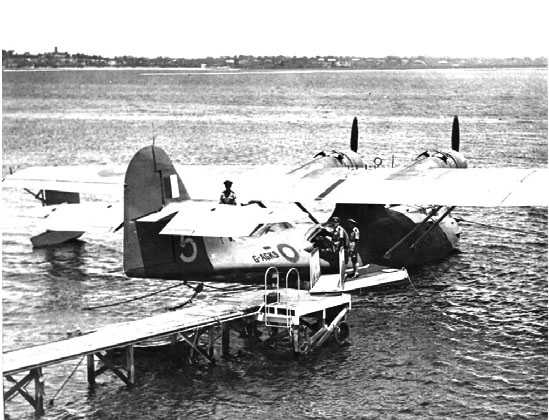
Catalina of the RAAF
(Work in progress)
USN Aviation
Despite promising start already in 1911, Admiral William Benson attempted to dissolve the USN’s Naval Aeronautics program in 1919. Assistant Secretary of the Navy Franklin Roosevelt and folloiwing would instead maintained it despite the naval staff will ti only support Mahanian battleship-based doctrines. Billy Mitchell’s campaign to demonstrate the capabilities of naval aviation and then to establishe an indpendent Department of Aeronautics was supported by Secretary of the Navy Josephus Daniels, strongly opposed by the naval staff again. Daniels ordered a rigged test against USS Indiana in 1920, but by the way the navay managed it, concluded that “the entire experiment pointed to the improbability of a modern battleship being either destroyed or completely put out of action by aerial bombs.“. An Infuriated Mitchell contacted the press and the New-York Tribune investigation unveiled the circumstances created by an unwilling navy. The pressure was enough to led Congressional resolutions, compelling more honest studies.
Next step was more decisive: The sinking of SMS Ostfriesland violated the Navy’s rules of engagement and vindicated Mitchell to the public. Some in the naval staff like Captain William A. Moffett despised the the publicity stunt and ways to shortcut the navy staff but became a strong advocate for a separate naval air force. Moffett worked hard to ensure his fleet air arm would escape the fate of a Land/Sea Air Force unique airpower force, a fate seeing in UK the two air services fusioned in 1918, the Royal Flying Corps and Royal Naval Air Service, to create the Royal Air Force until until 1937. Moffett supervised the development of naval air tactics in the 1920s and the USS Langley took a great part in these development as well as the Lexington class.
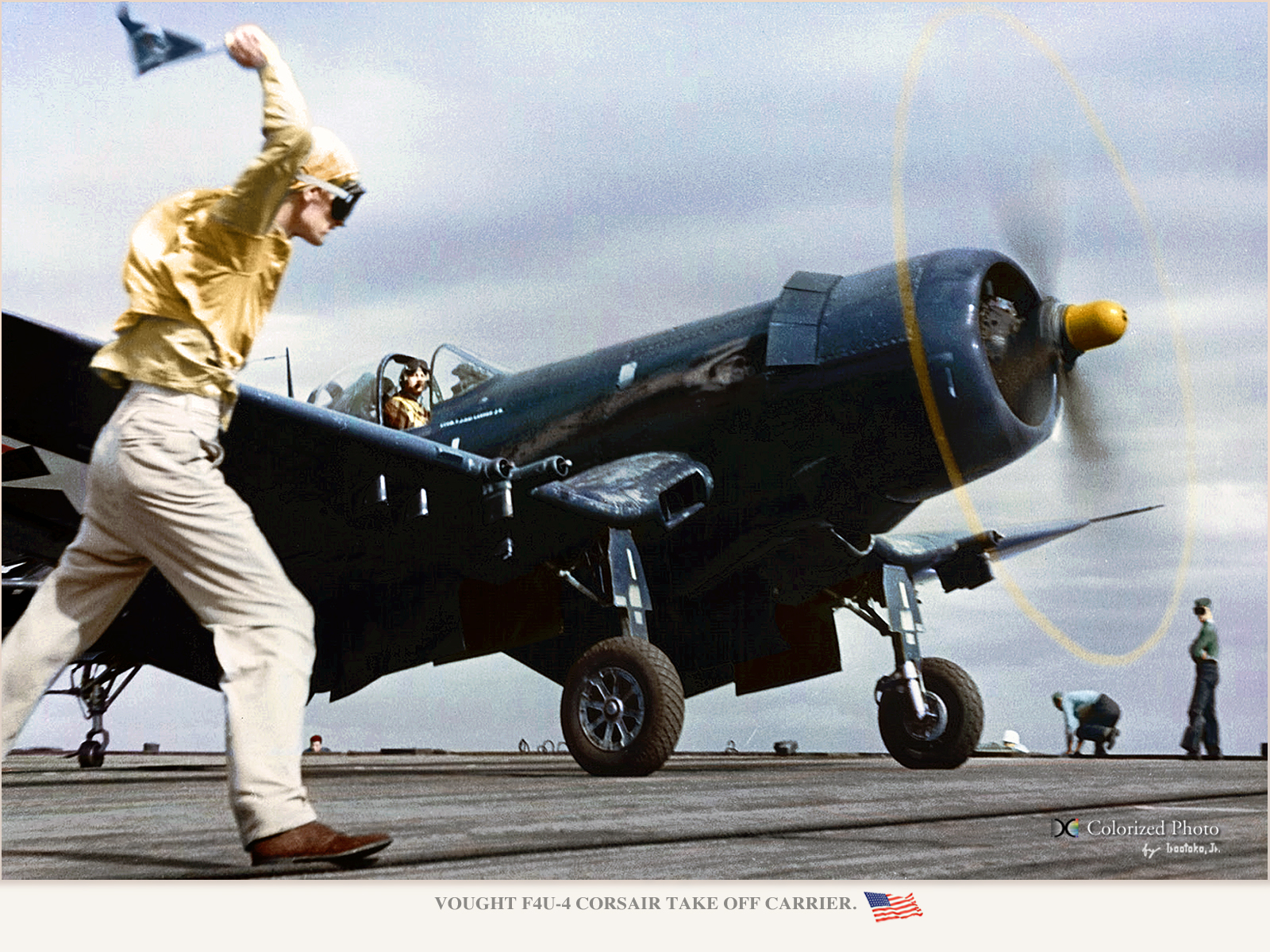
The rise of naval aviation was constrained at first to two assets:
-Seaplanes/floatplanes carried on board battleships and cruisers
-Patrol seaplane/floatplanes (a service dissolved in 1919 as the threat of submarines no longer existed)
-Carrier-borne aviation: Just three CVs until 1932, four (with Ranger), then six in 1940 with Enterprise and Yorktown.
There was a very limited USMC aviation, reflecting the small size of the service and no land-based bombers, privilege of the Army Air Force.
Aviation budget allocation saw the USN second, and the USMC third, both combined were a very small fraction of the USAAF. Nevertheless, the Navy had the luxury of ordering separate types for its needs, and manufacturers with limited production capabilities often courted therefore this service (Like Grumman, Great Lakes or Brewster for example).
Major Players like curtiss and Boeing did so too, to add models to their range.
WW2 USN seaplanes
PBY Catalina (1936-45)
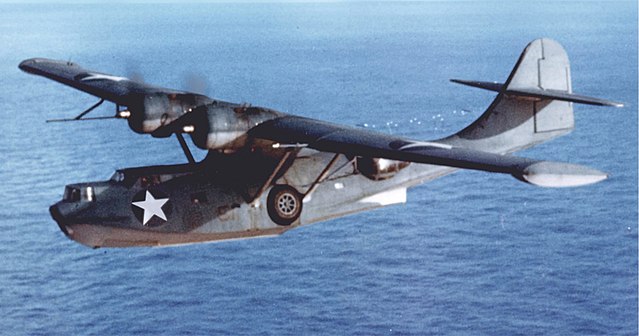
A multirole patrol seaplane, twin engine and monoplan parasol. It was the culmination of eight years of the USN to create the ideal long range modern patrol aircraft. The PBY was able to play the main roles of Maritime patrol bomber, search and rescue but also able to attack if needed.
Specifications:
Production: 3,308 (2,661 U.S., 620 Canadian, 27 Soviet)
Here a cutaway.
WW2 USN carrier planes
In a general way, apart carrier-borne aircraft, most bombers deployed by the Navy were developed for the USAAF, perhaps to the exception of seaplane bombers such as the PBY Catalina, a true amphibian, and the passive PB4Y-2 privateer derived from the Consolidated B-24 Liberator the beast of burden of the USAAF. There were few exceptions in the reserve, but perhaps the Douglas A-20 Banshee, an “un-navalized” Dauntless. Some Bombers were almost excusively reserved for maritime operations, reconnaissance, SAR, ASW patrols and antiship duties: The Lockheed PV-1 Ventura and PV-2 Harpoon.
Carrier Fighters
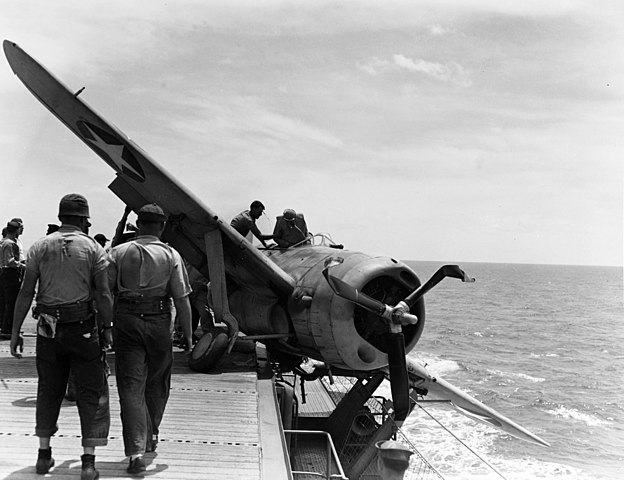
The US Navy started badly in December 1941: The F3F was just beinf replaced by the F4F in some units and most transitioned earlier with the constroversial F2A Buffalo (here), plagued by problems. The Grumman Wildcat (the first of the famous “cats”) was certainly better in comparison but not up to the task compared to the Mitsubishi A6M Zero, its direct opponent. But what it lacked in speed and agility, the Wildcat compensated by its resilience and armament. Those who suvived the onslaught of the south Pacific and transitioned ot the Hellcat or Corsair became aces, in particular during the “great Marianna turkey shoot” of 1944.
Among all fighters, the Wilcat and Hellcats from Grumman played a considerable part in the pacific campaign, the first right in 1941, and until 1943, the second in 1943-45, both premium carrier-borne fighters. Their replacement came too late to take an active part in the war. The default land-based fighter was the F4U corsair. The top carrier-based ace was David McCampbell with 38 victories on Hellcat, followed by Alexander Vraciu (18).
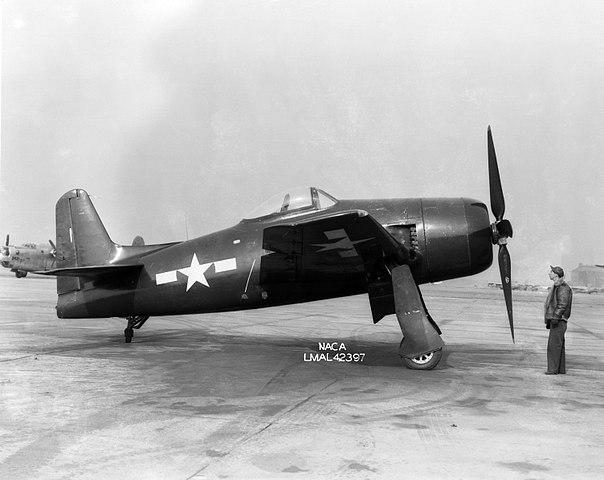
XF8F-1 Bearcat of the US Navy tested in 1945. The designed replacement for the popular Hellcat was compared during its long testing sessions from december 1943 to early 1945, to the Vought F2U Corsair. It appeared the Bearcat was marginally slower but more maneuverable and climbed more quickly. Hiowever some issues delayed the order, and deliveried started only from 21 May 1945.
They only operated a few sorties with the Fighter Squadron 19 (VF-19) in August-September before the war ended. Witht the Tigercat, the Bearcat had a short career, before the Navy was convinced to convert to Jet age. The Navy tested soon before the end of the war the Bell XTDL Airacobra and Bell XF2L Airacomet, first of the new jet generation, while other models were studied when the war ended, which will be in service right in time for the Korean war.
Carrier-based Torpedo Bombers
Land-based Navy Planes
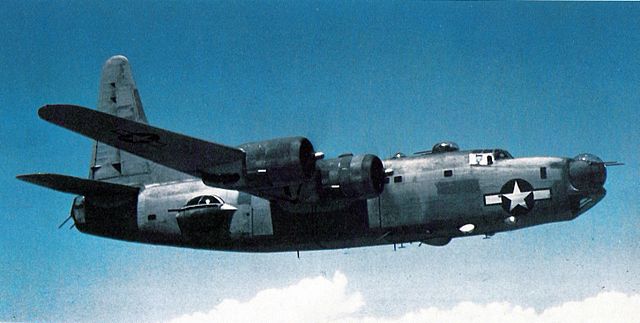
Consolidated PB4Y-2 Privateer. Among the land-based Navy Bombers, this was the only one truly designed for the purpose. Although it was closely related to the B-34 Liberator, the number of modifications brought to the design were considerable, with the most striking aspect being its vertical tail (instead of the B-24 “h” tail). Only 739 were delivered.
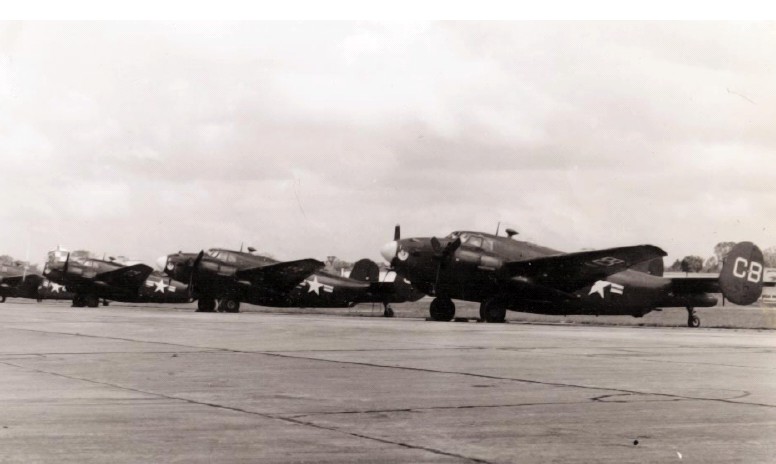
Harpoons, VP-136 based on Whibdey Island in 1945.
Another “pure” Navy land-based bomber was the much smaller, but fast and dependable Lockheed PV-2 Harpoon derived from the earlier Ventura.
Also used by the USMC, the Harpoon was developed from the ventura to take on in the early months of 1942, the main task of anti-submarine warfare, the sole responsibility of the USAAF until then. This irked the Navy which searched for a long-range, land-based patrol and reconnaissance aircraft armed with bombs. With staunch USAAF opposition, long-range floatplanes like PBYs were used instead. However when the B-29 needed to be produced in more facilities, the Navy accepted to lent its own plant in Renton for extra USAAF production. In exhange, the USAAF granted a derivative bomber and provided some to the Navy as well. Lockheed’s production of the B-34 and B-37 was soon replaced by the navalized PV-1 Ventura. The latter was delivered from December 1942, until full service by February 1943. They played their part in the Pacific, until replaced gradually by the much improved PV-2 Harpoon.
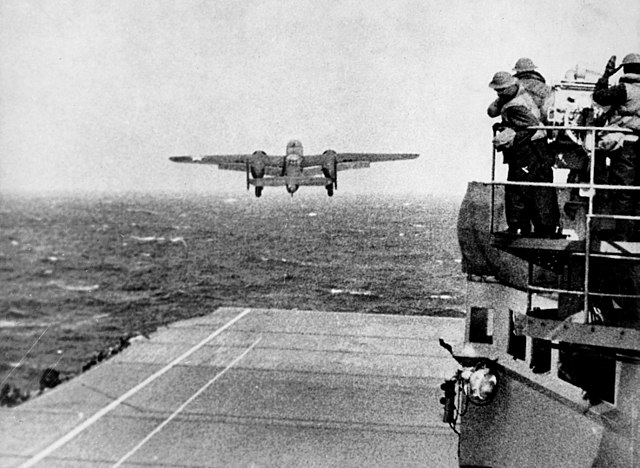
The latter was a major redesign with better wing area for increased load. It first flew on 3 December 1943. In addition to five forward-firing machine guns, no bombardier’s position, 30% more bombload and eight 5-inch HVAR rockets under wings. However due to the absence of more powerful engines, range and performances were lower than the Ventura. 500 were ordered by the Navy anyway, further redesigned after a first batch of 69. The PV-2D entered in small numbers but the order was cancelled in September 1945.
One USAAF bomber used in the Pacific took proeminence, like the North American B-25 Mitchell: Not only it gained immortal fame in Doolittle’s raid over Tokyo from USS Hornet, but it became on of the staple of low-flying US attack bombers in the Pacific, in conjunction to the heavily armed Douglas BD Havoc. Armed with a 50 mm cannon, bombs and 10+ nose-mounted heavy machine guns, making the strafer versions (B-25C1/D1, B-25J1+ NAA strafer nose J2) a terrifying gunship, notably at Truk.
Among land-based fighters that took part in Pacific operations, the Curtiss P-40, and later in the war, the Lockheed P-38 lighting gained fame due to their long range. The prominent ace of the Pacific, Richard “Dick” Bong credited with 40 victories and those that shot down Yamamoto’s transport plane in April 1943 (Operation Vengeance) gained popularity.
The famous P-51 Mustang was rarely seen in the Pacific, but only in the latter part of 1944 and early 1945 to escort B-29 bombers from the recently conquered islands.
Land-based Torpedo Bombers
Observation planes
*Both are available with floats or undercarriage for carrier service.
Miscellanous Navy planes
Trainers
Transport/laison
Trainers
WW2 USMC planes
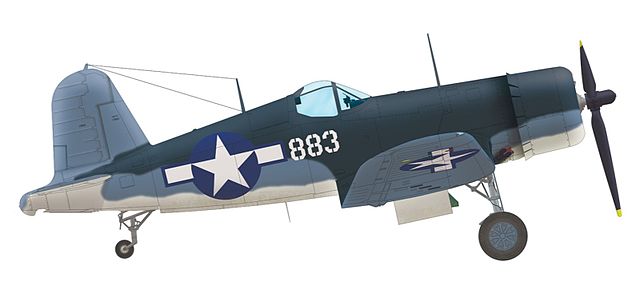
Personal Corsair of Greg “Pappy” boyington, from VMA 214 “black sheeps”.
Of all the air corps of WW2, the USMC (US Marine Corps) was perhaps the least favoured. It went basically with the leftovers of the USN, itself budgetary restrained comared to the USAAF. The nature of operations in the Pacifc however soon inverted the tendency and soon the latest models were distributed to the USMC as well. In 1944 for example, the main fighter was the excellent F4U Corsair, deployed from ground bases. The Marine Attack Squadron 214 (VMA-214) famous “baa baa black sheeps” squadron led by Commander (Major) Greg “pappy” Boyington which entered the legend contributed greatly in the Island hopping campaign to reduce their island-based counterparts, especially around Truk. He became also the USMC Top ace, credited with 28 victories, followed by Joseph Foss (26).
But of the course the other major role of the USMC air force was to provide fast transport and bring supplies for the Marines all around the Pacific, hence the accent put on transport planes.
It also took a part from island bases to the USN ASW and bomber patrols, with iconic models such as the Marauder, Mitchell and the long-range Privateer and Catalina.
- Fighters:
- Bombers:
- Recce and Misc.:
Blimps and dirigibles
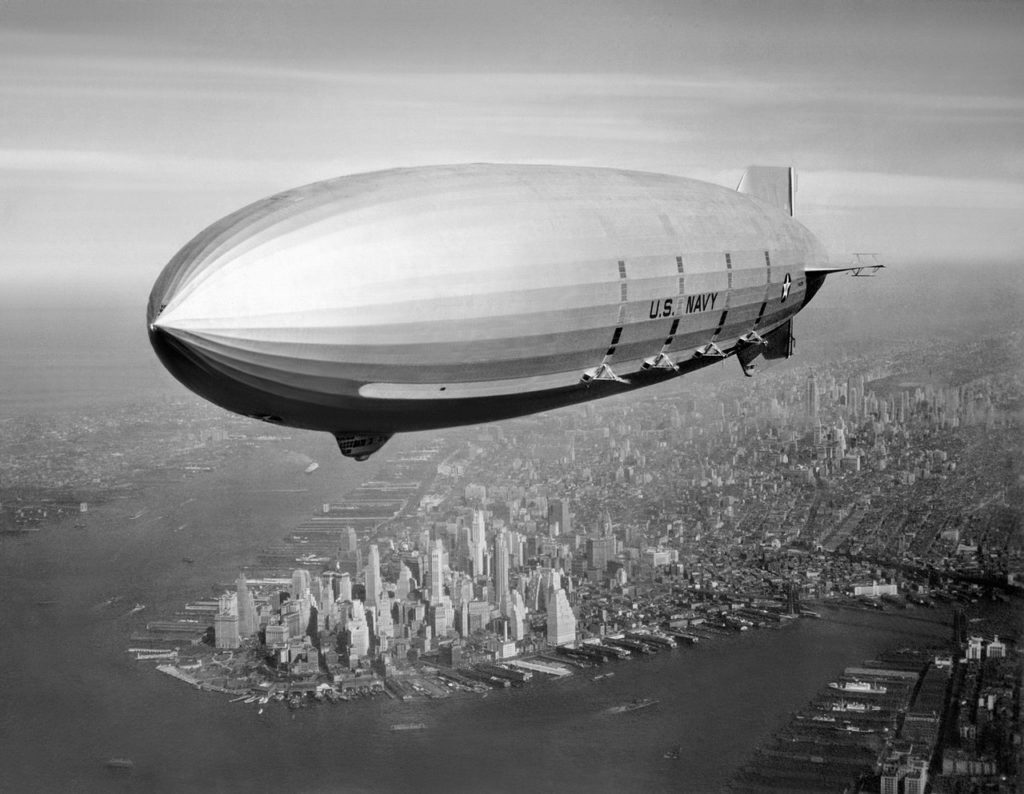
There were at first the commissioned “airships” as any regular USN warships: The USS Shenandoah (ZR-1), USS Los Angeles (ZR-3) and the USS Akron and Macon, first flying aircraft carriers.
During the Korean war and beyond, the USN also operated two Airborne Early Warning dirigibles for ten years, between 1952 and 1962, housing a radar in their roomy interior, the ZWG and ZWN Reliance, both by Goodyear. From 1947, and until 1962, the same manufacturer would built for the USN a serie of smaller patrol blimps, ZPG, ZPK, ZP2K, ZP3K, ZP4K, ZP5K, ZPM, ZPN, ZP2N and two scouts, lighter and faster, ZSG and ZS2G plus the ZTG and ZTL for training. With the advent of carrier-borne ADACS, the career of lighter-than-air ended in the USN, although proposals remained well until the late 1980s.
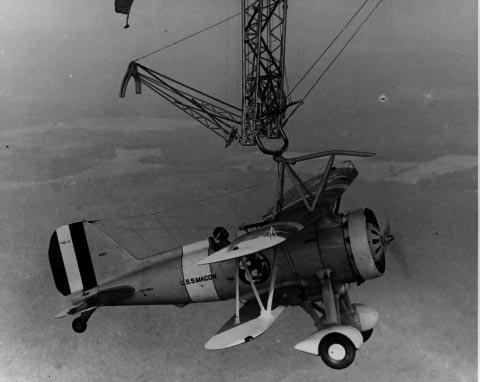
Curtiss Sparrohawk, hooked. The Macon and Acron carried each up to 5 aircraft.
Other nations
Finland
IVL A.22 Hansa – two-seat reconnaissance seaplane (1922)
VL Sääski – two-seat training floatplane (1928)
Norway
Marinens Flyvebaatfabrikk M.F.5 – two-seat reconnaissance seaplane (1919)
Marinens Flyvebaatfabrikk M.F.6 – trainer seaplane (1920s)
Marinens Flyvebaatfabrikk M.F.7 – trainer seaplane (1920s)
Marinens Flyvebaatfabrikk M.F.8 – trainer seaplane (1920s–1930s)
Marinens Flyvebaatfabrikk M.F.9 – fighter seaplane (1925)
Marinens Flyvebaatfabrikk M.F.10 – advanced training seaplane (1930s)
Marinens Flyvebaatfabrikk M.F.11 – three-seat reconnaissance seaplane (1930s)
Marinens Flyvebaatfabrikk M.F.12 – training seaplane (1930s)
Norsk Flyindustri Finnmark 5A – Norwegian built ambulance seaplane (1940s)
Netherlands
Fokker T.II – three-seat bombing torpedo floatplane (1921)
Fokker T.III – floatplane (1920s)
Fokker B.I & B.III – reconnaissance flying boat (1922)
Fokker B.II – reconnaissance flying boat (1923)
Fokker F.VII – transport floatplane (1924)
Fokker T.IV – four-seat torpedo bomber/reconnaissance floatplane (1927)
Fokker B.IV – transport flying boat (1928)
Fokker C.VII-W – two-seat light reconnaissance/training floatplane (1928)
Fokker C.VIII-W – three-seat reconnaissance floatplane (1928)
Fokker C.XI-W – two-seat reconnaissance seaplane (1935)
Fokker C.XIV-W – two-seat training/reconnaissance floatplane (1937)
Fokker T.VIII-W – three-seat torpedo bomber/reconnaissance floatplane (1939)
Poland
Lublin R-VIII bis – coastal reconnaissance floatplane (1930s)
Lublin R-XIII bis/hydro, R-XIII ter/hydro and R-XIIIG – reconnaissance floatplanes (1930s)
Romania
RAS-1 Getta – three-seat flying boat for training (1925)
SET 7H – single-engined reconnaissance float plane (1935)
Sweden
Saab 17 – single-engine bomber-reconnaissance monoplane that could be fitted with floats (1940)
Read More/Src
en.wikipedia.org/wiki/List_of_seaplanes_and_amphibious_aircraft
warbirdsnews.com/warbirds-news/poor-lambs-corsairs-baa-baa-blacksheep.html



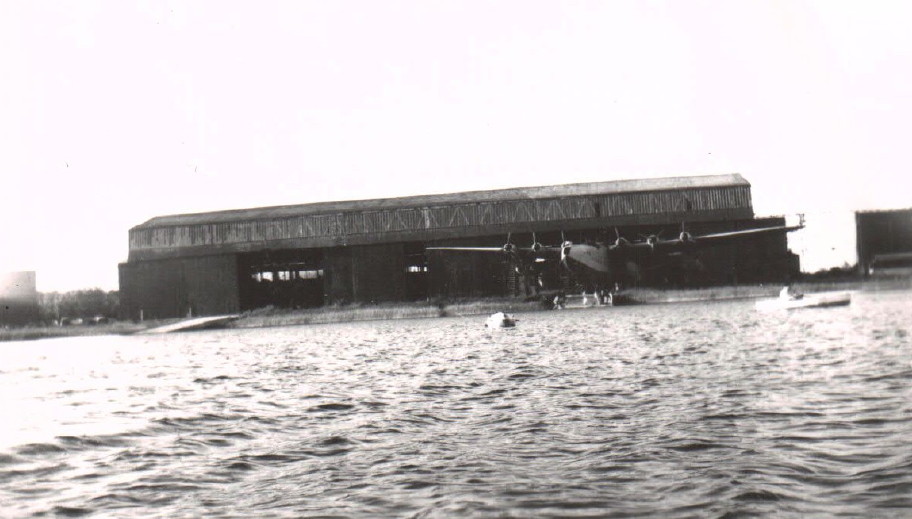
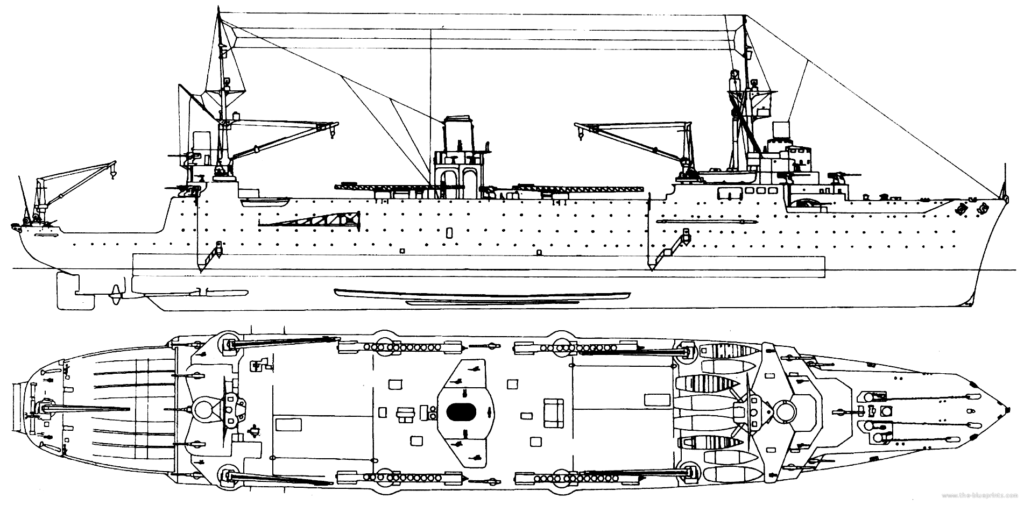
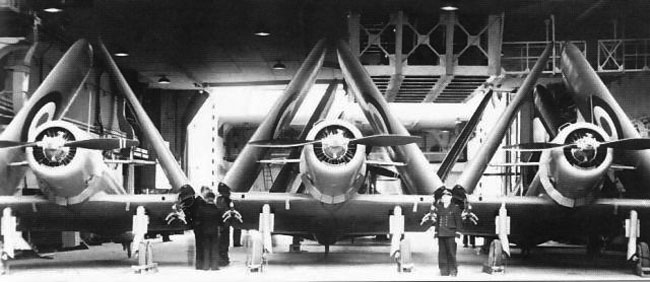
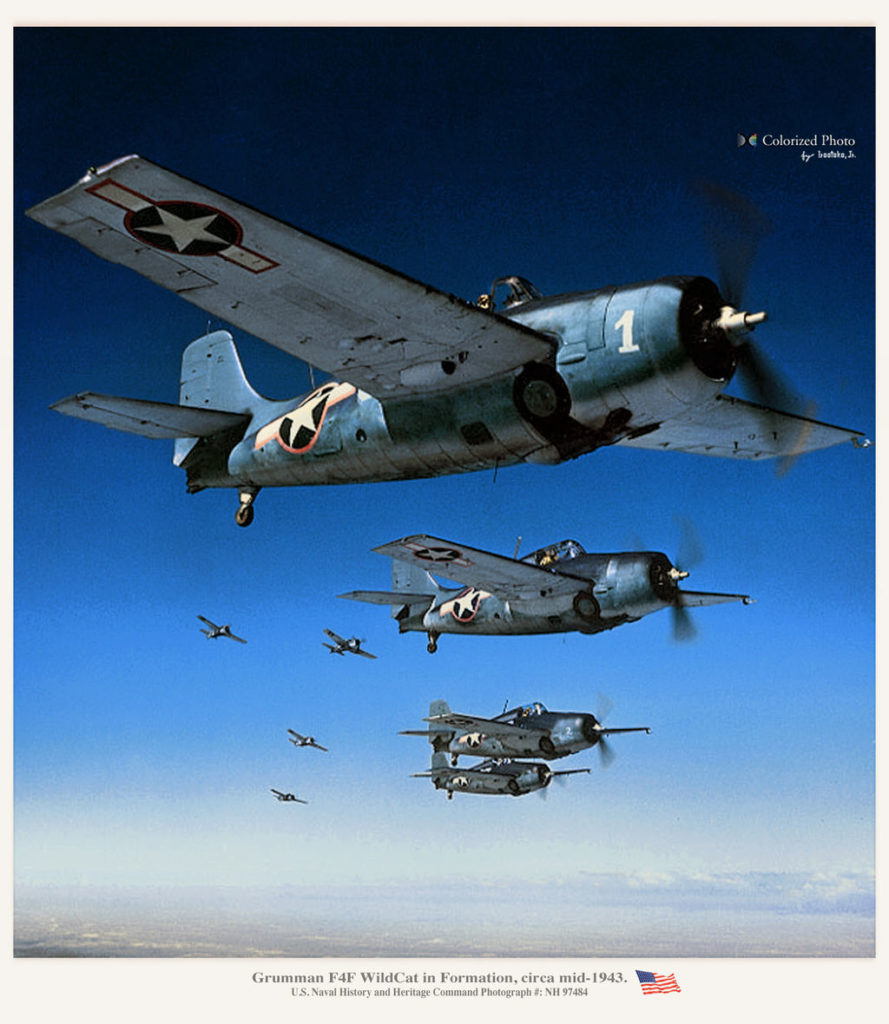
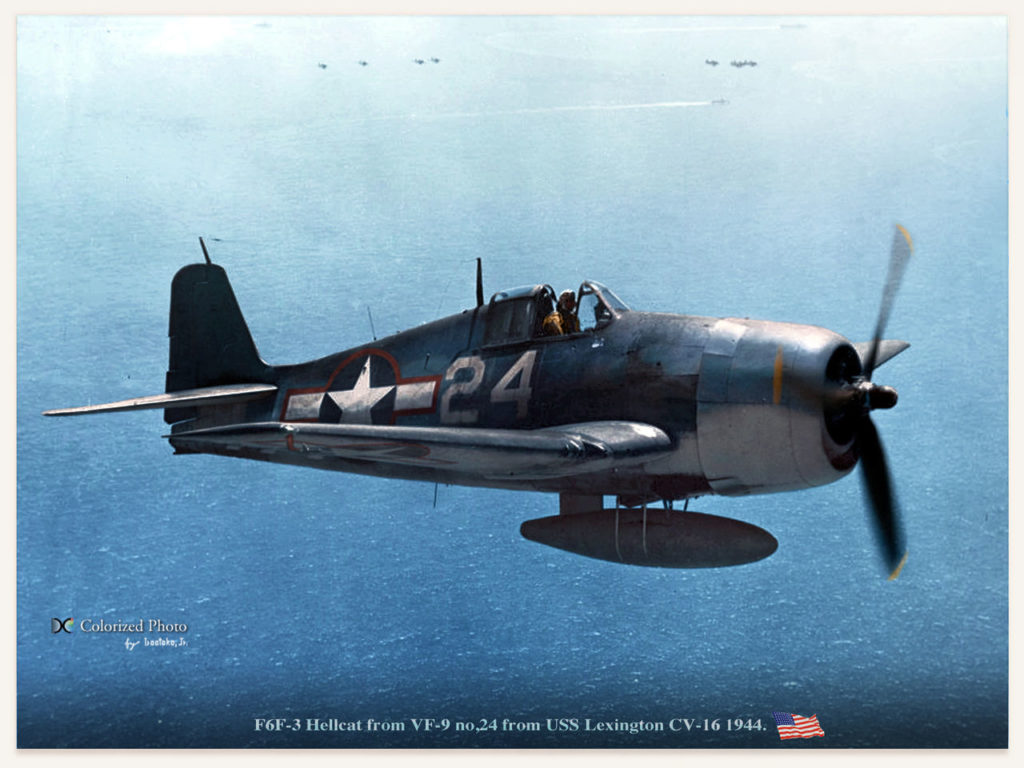
 Latest Facebook Entry -
Latest Facebook Entry -  X(Tweeter) Naval Encyclopedia's deck archive
X(Tweeter) Naval Encyclopedia's deck archive Instagram (@navalencyc)
Instagram (@navalencyc)





 French Navy
French Navy Royal Navy
Royal Navy Russian Navy
Russian Navy Armada Espanola
Armada Espanola Austrian Navy
Austrian Navy K.u.K. Kriegsmarine
K.u.K. Kriegsmarine Dansk Marine
Dansk Marine Nautiko Hellenon
Nautiko Hellenon Koninklije Marine 1870
Koninklije Marine 1870 Marinha do Brasil
Marinha do Brasil Osmanlı Donanması
Osmanlı Donanması Marina Do Peru
Marina Do Peru Marinha do Portugal
Marinha do Portugal Regia Marina 1870
Regia Marina 1870 Nihhon Kaigun 1870
Nihhon Kaigun 1870 Preußische Marine 1870
Preußische Marine 1870 Russkiy Flot 1870
Russkiy Flot 1870 Svenska marinen
Svenska marinen Søværnet
Søværnet Union Navy
Union Navy Confederate Navy
Confederate Navy Armada de Argentina
Armada de Argentina Imperial Chinese Navy
Imperial Chinese Navy Marinha do Portugal
Marinha do Portugal Mexico
Mexico Kaiserliche Marine
Kaiserliche Marine 1898 US Navy
1898 US Navy Sovietskiy Flot
Sovietskiy Flot Royal Canadian Navy
Royal Canadian Navy Royal Australian Navy
Royal Australian Navy RNZN Fleet
RNZN Fleet Chinese Navy 1937
Chinese Navy 1937 Kriegsmarine
Kriegsmarine Chilean Navy
Chilean Navy Danish Navy
Danish Navy Finnish Navy
Finnish Navy Hellenic Navy
Hellenic Navy Polish Navy
Polish Navy Romanian Navy
Romanian Navy Turkish Navy
Turkish Navy Royal Yugoslav Navy
Royal Yugoslav Navy Royal Thai Navy
Royal Thai Navy Minor Navies
Minor Navies Albania
Albania Austria
Austria Belgium
Belgium Columbia
Columbia Costa Rica
Costa Rica Cuba
Cuba Czechoslovakia
Czechoslovakia Dominican Republic
Dominican Republic Haiti
Haiti Hungary
Hungary Honduras
Honduras Estonia
Estonia Iceland
Iceland Eire
Eire Equador
Equador Iran
Iran Iraq
Iraq Latvia
Latvia Liberia
Liberia Lithuania
Lithuania Mandchukuo
Mandchukuo Morocco
Morocco Nicaragua
Nicaragua Persia
Persia San Salvador
San Salvador Sarawak
Sarawak Uruguay
Uruguay Venezuela
Venezuela Zanzibar
Zanzibar Warsaw Pact Navies
Warsaw Pact Navies Bulgaria
Bulgaria Hungary
Hungary

 Bundesmarine
Bundesmarine Dutch Navy
Dutch Navy Hellenic Navy
Hellenic Navy Marina Militare
Marina Militare Yugoslav Navy
Yugoslav Navy Chinese Navy
Chinese Navy Indian Navy
Indian Navy Indonesian Navy
Indonesian Navy JMSDF
JMSDF North Korean Navy
North Korean Navy Pakistani Navy
Pakistani Navy Philippines Navy
Philippines Navy ROKN
ROKN Rep. of Singapore Navy
Rep. of Singapore Navy Taiwanese Navy
Taiwanese Navy IDF Navy
IDF Navy Saudi Navy
Saudi Navy Royal New Zealand Navy
Royal New Zealand Navy Egyptian Navy
Egyptian Navy South African Navy
South African Navy






























 Ukrainian Navy
Ukrainian Navy dbodesign
dbodesign